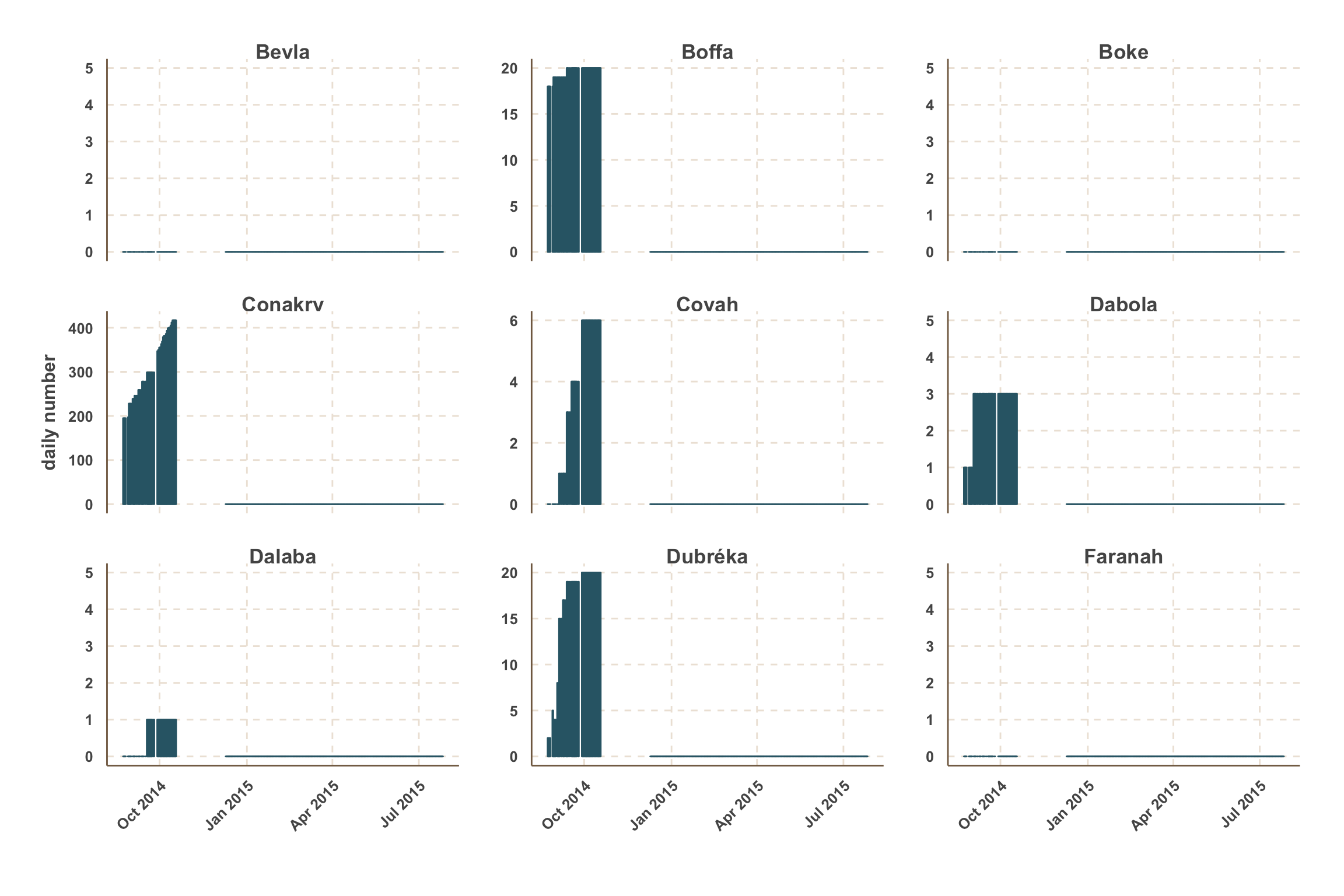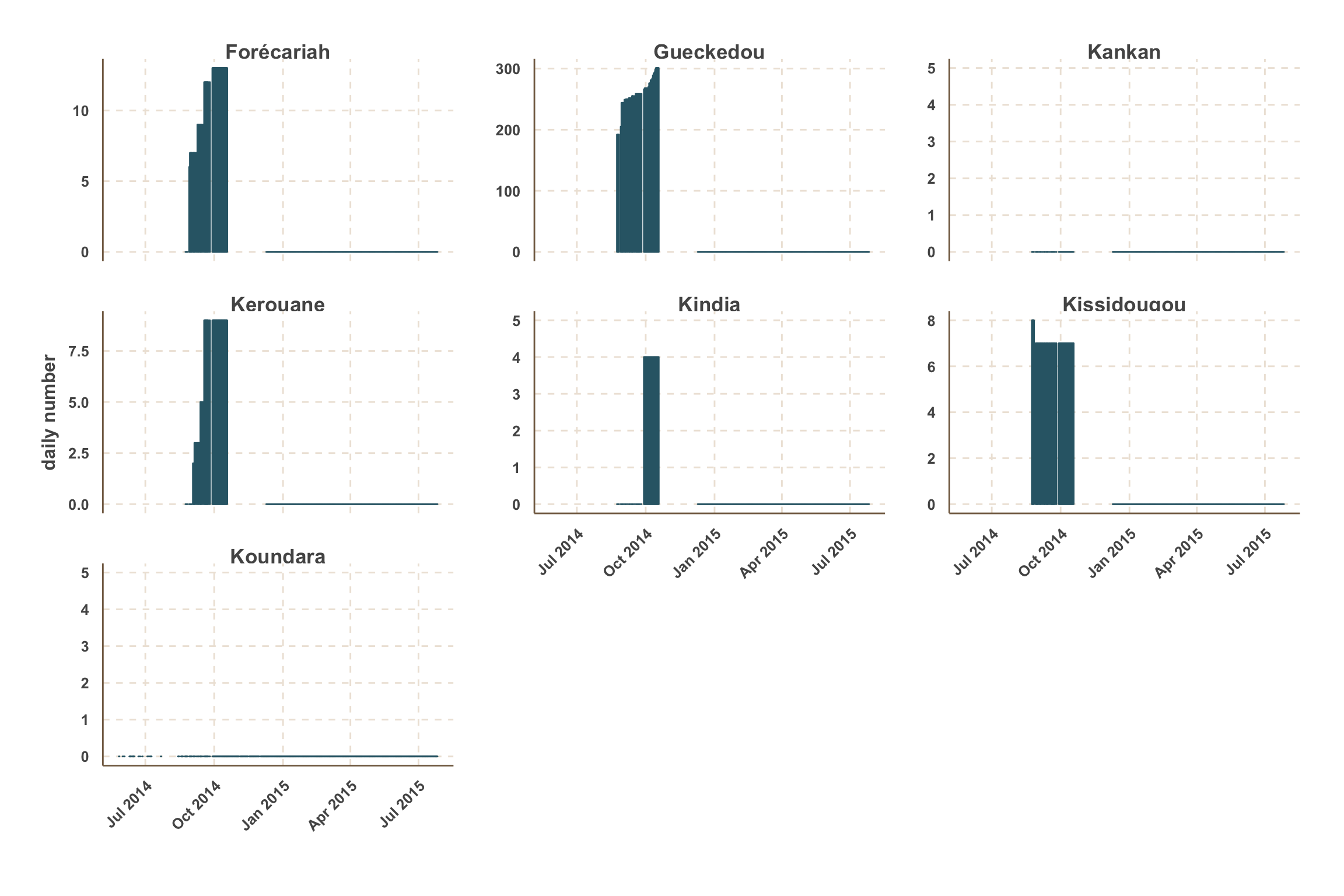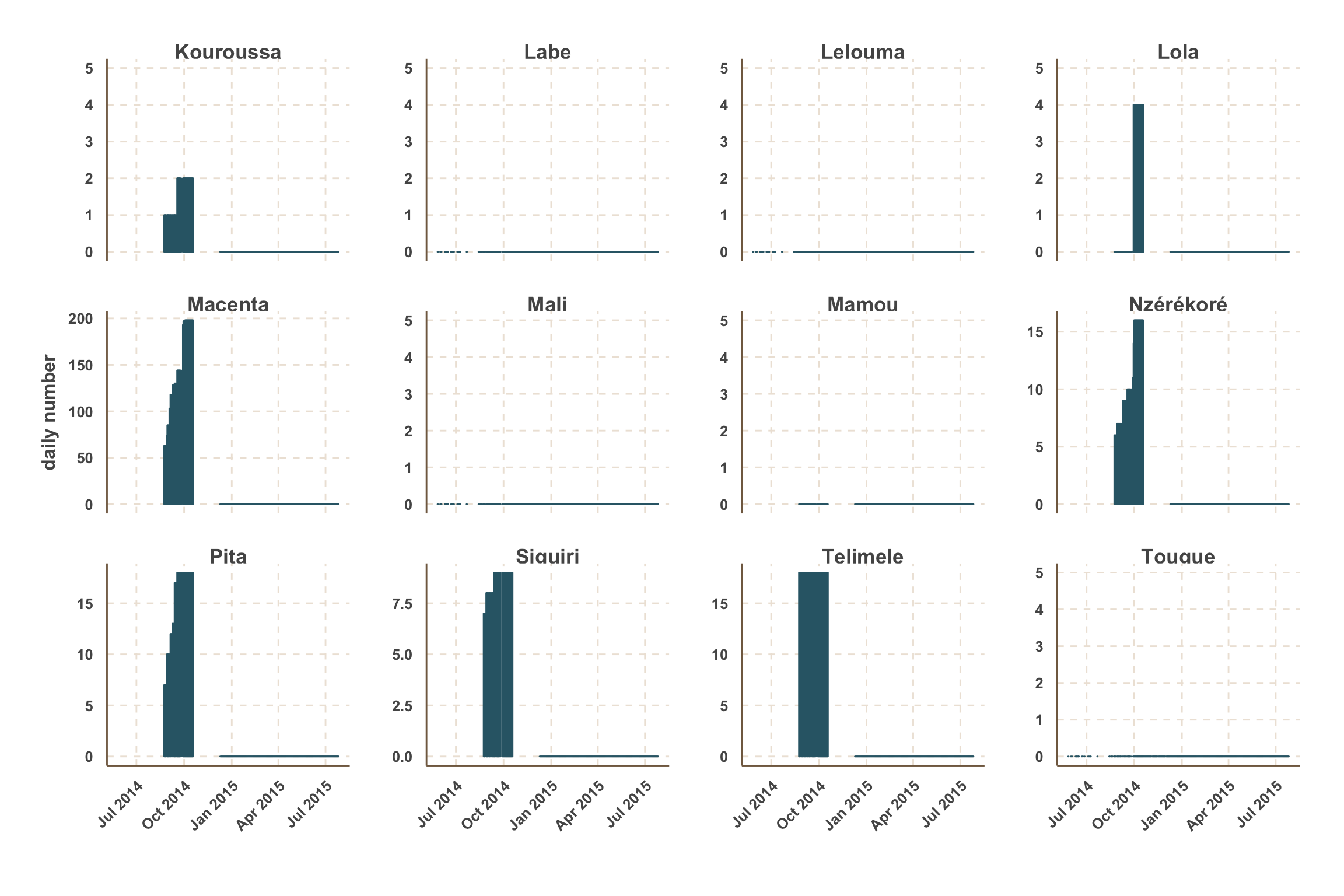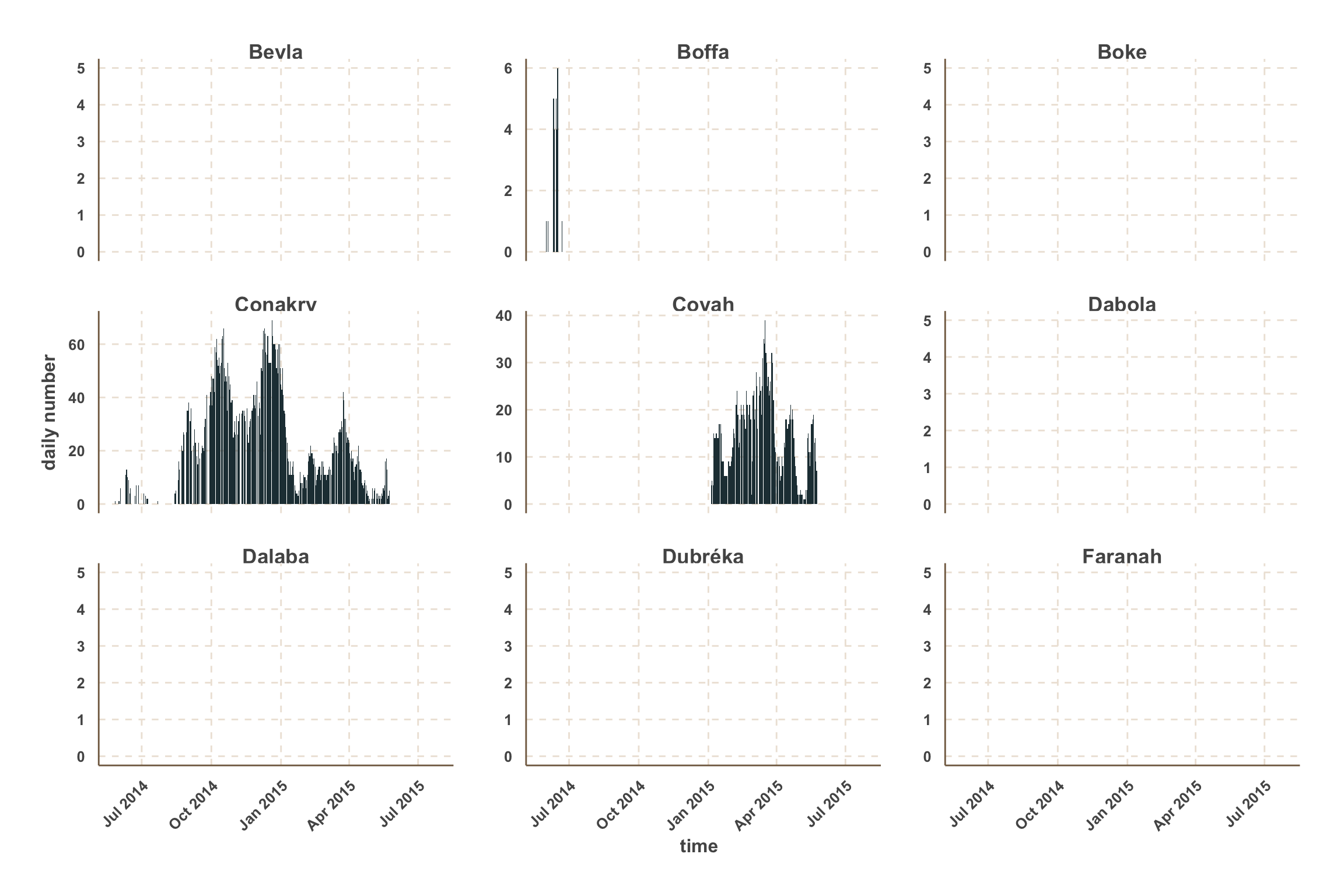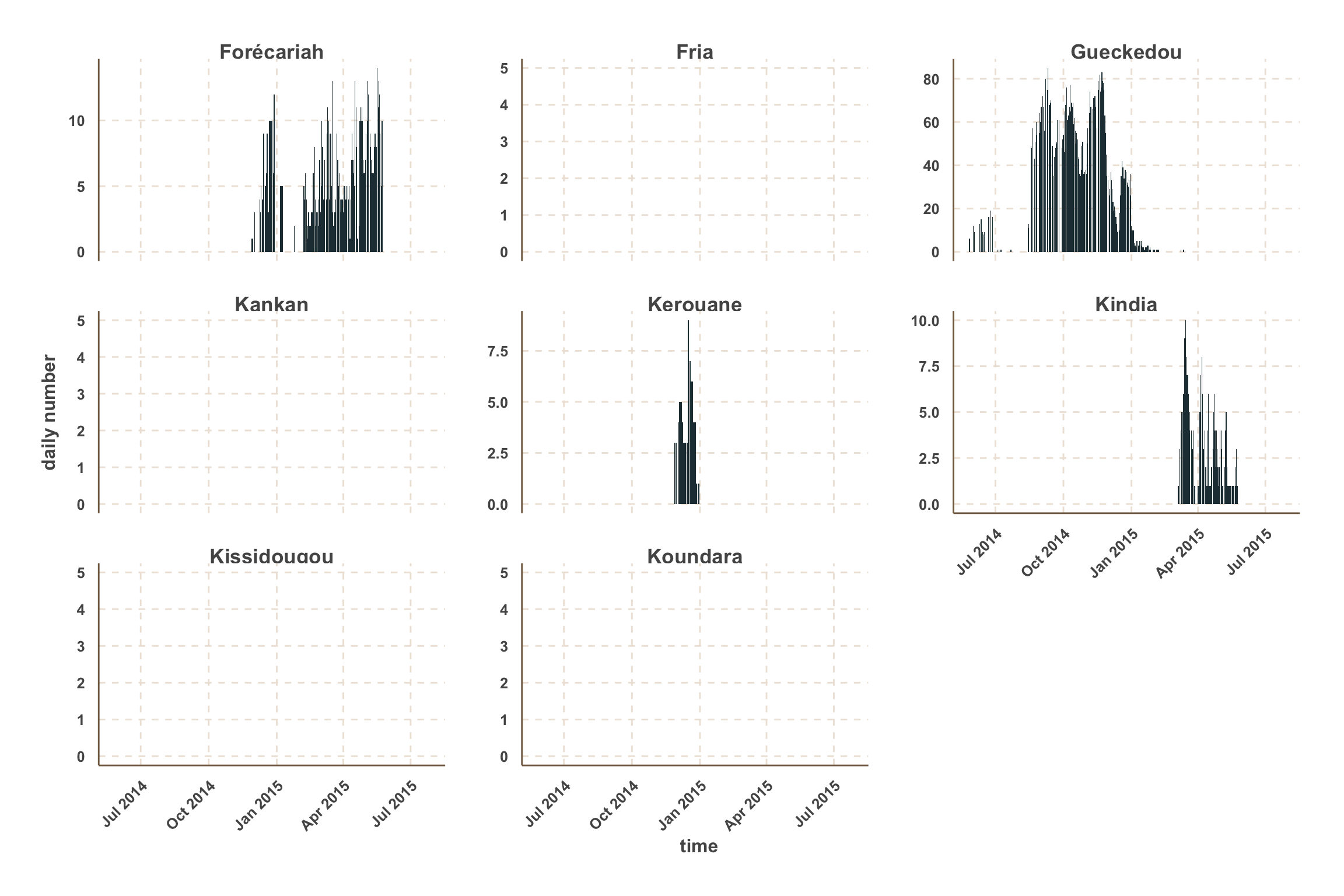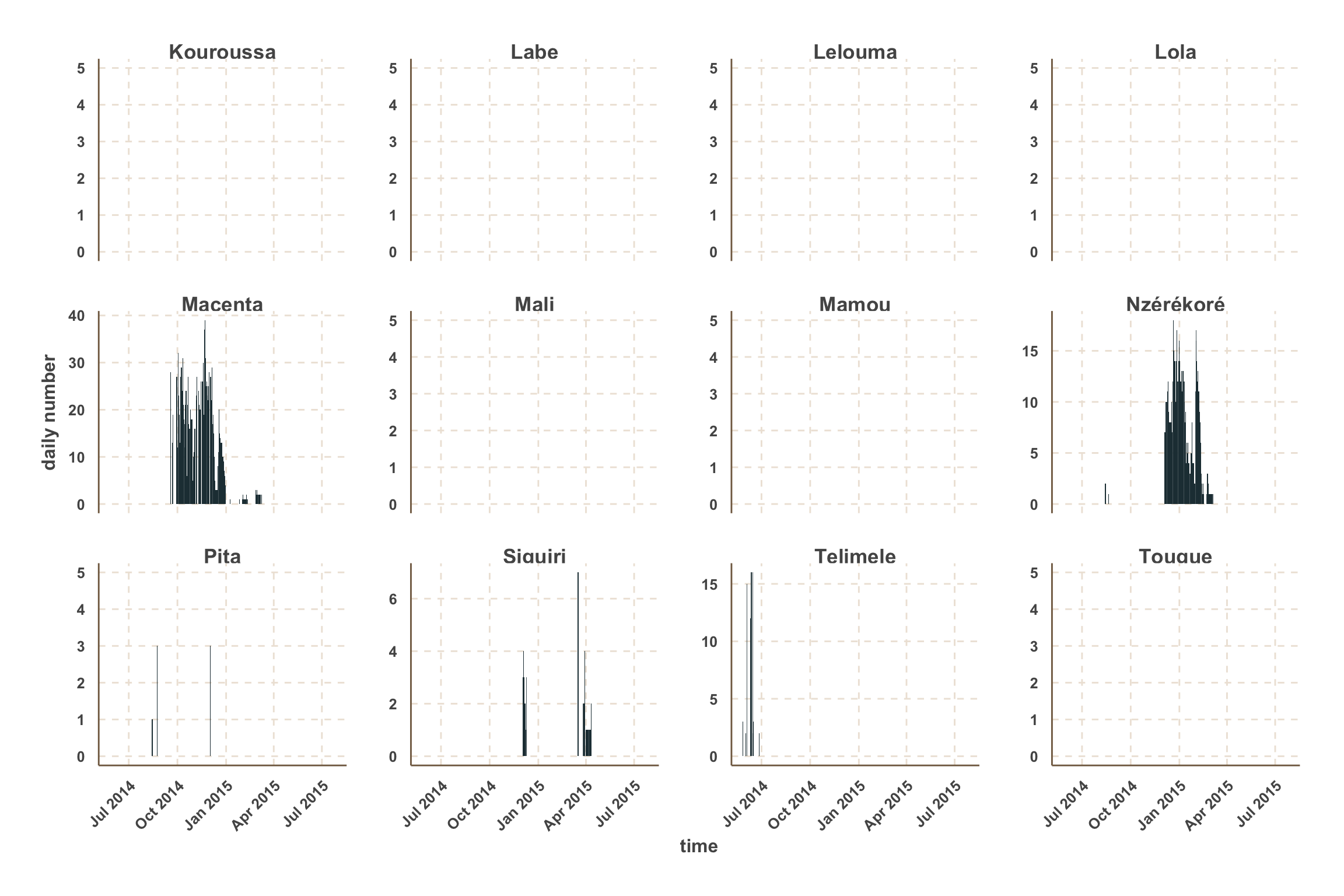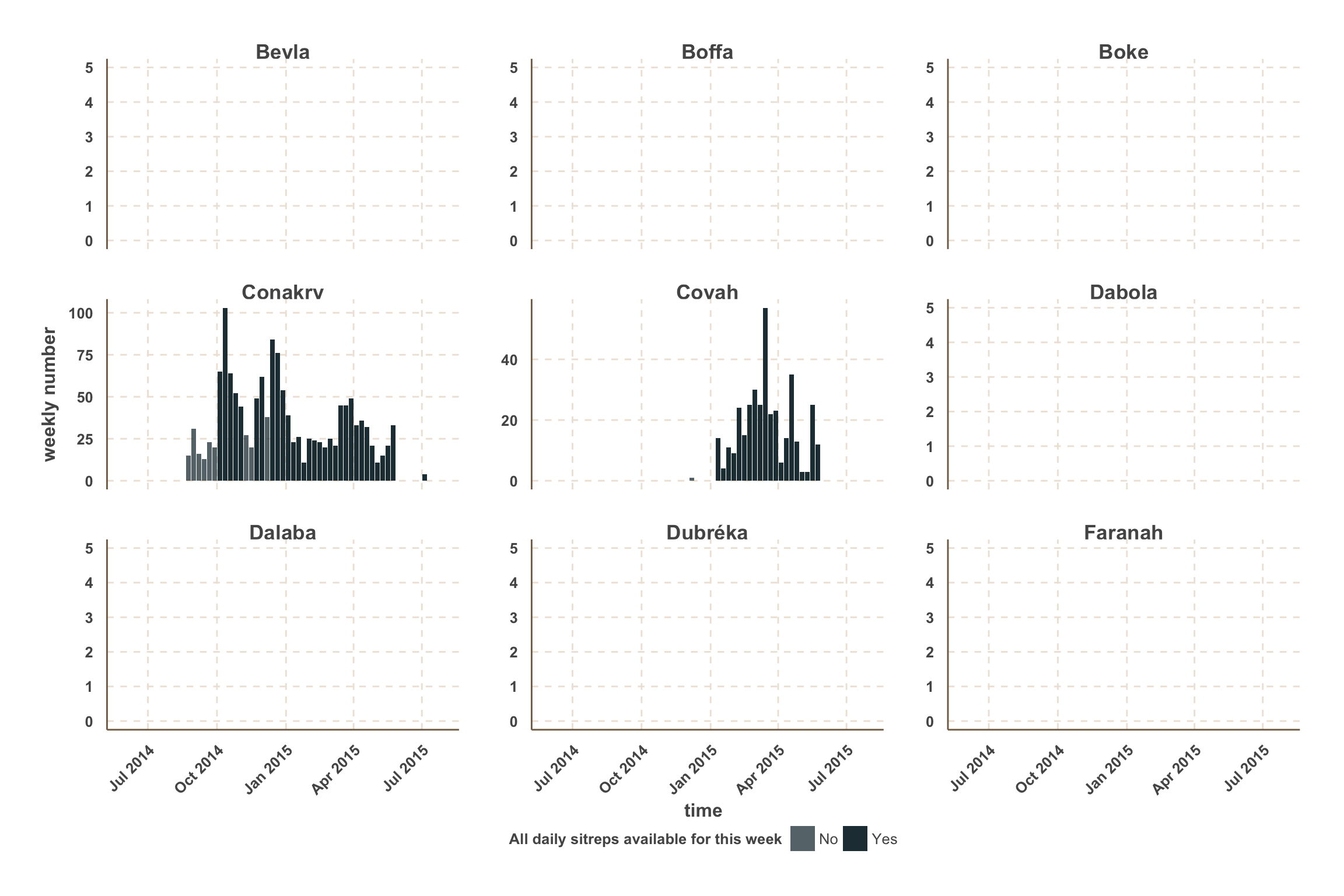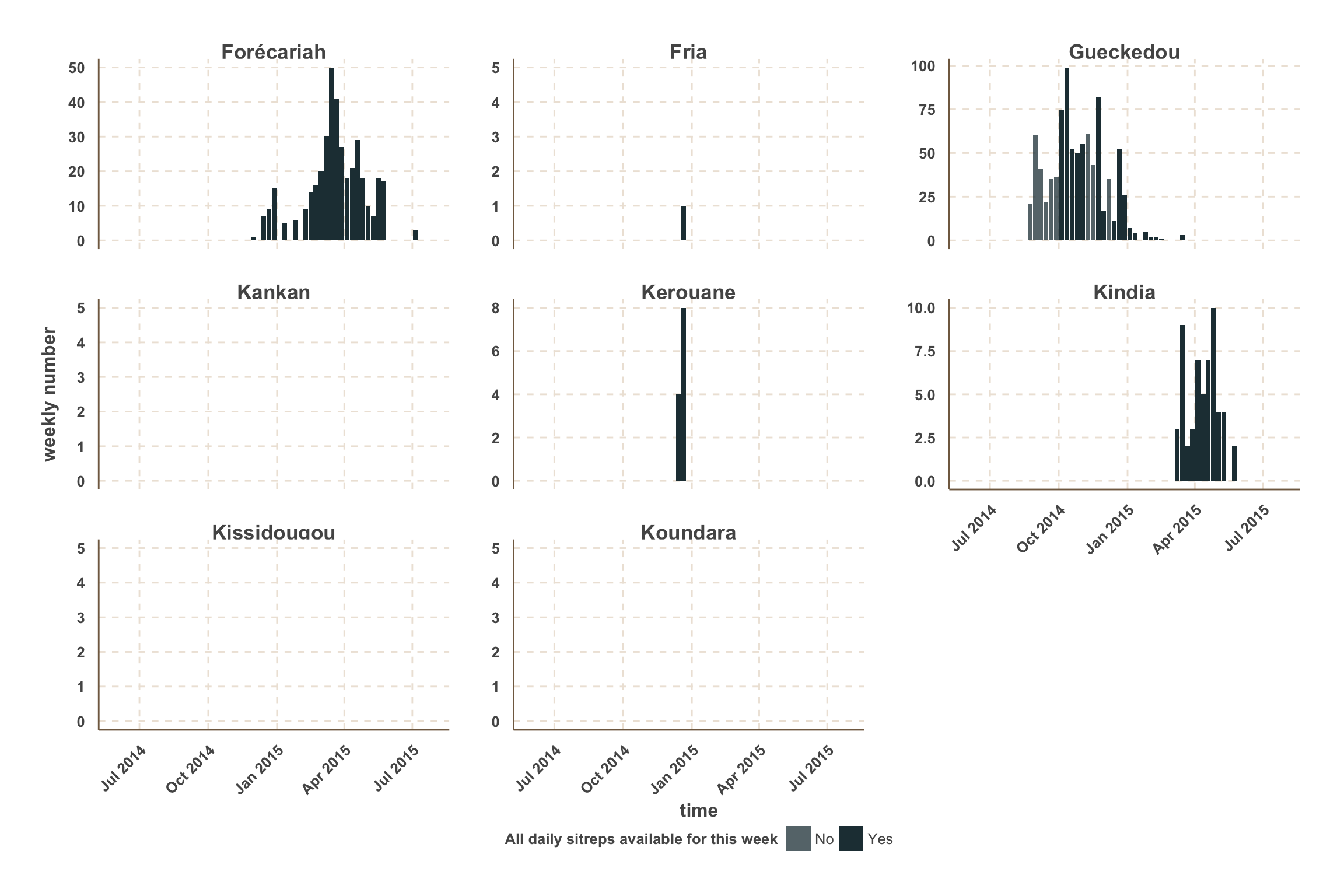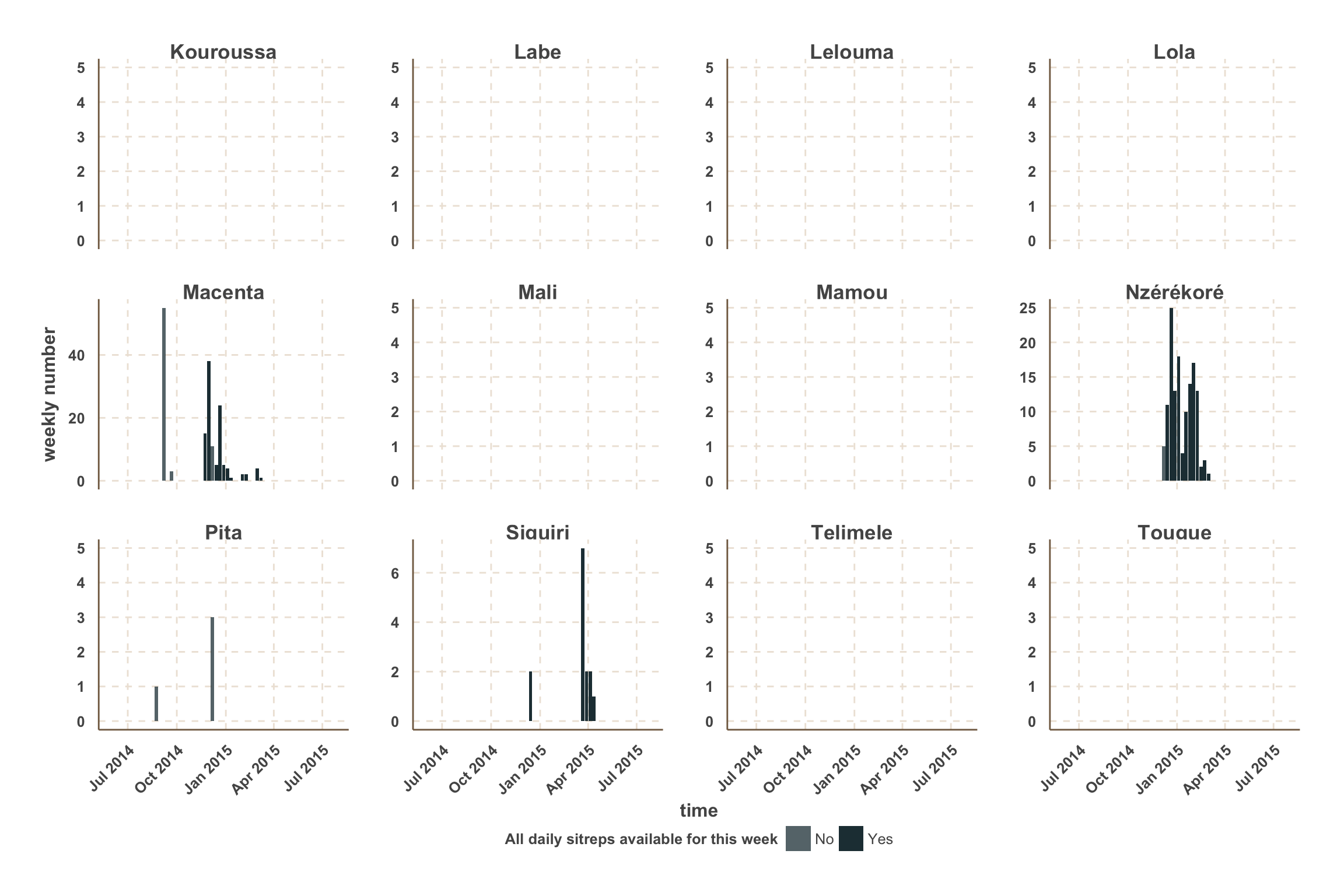Executive summary
- In Guinea, 5 new confirmed cases were reported in the week ending 26 July, this is 18 less cases than in the preceding week.
- Three were reported in the capital, Conakry, and one in the neighbouring prefecture of Coyah.
- For the first time since January 2015, no cases were reported in the prefecture of Forécariah.
- Control measures and community engagement must remain sustained in order to end the epidemic.
Data
Weekly new cases and deaths
Notes
- Weekly number of new cases and deaths are computed by summing daily numbers. Note that this doesn’t account for reclassification of cases that occur over the week: as such, suspected cases that are confirmed will appear in both suspected and confirmed counts.
- A week is defined from Monday to Sunday.
- Weeks with missing daily SitReps appear slightly transparent.
- Where possible, numbers are stacked by case status (confirmed, probable, suspected).
Weekly new confirmed, probable & suspected cases
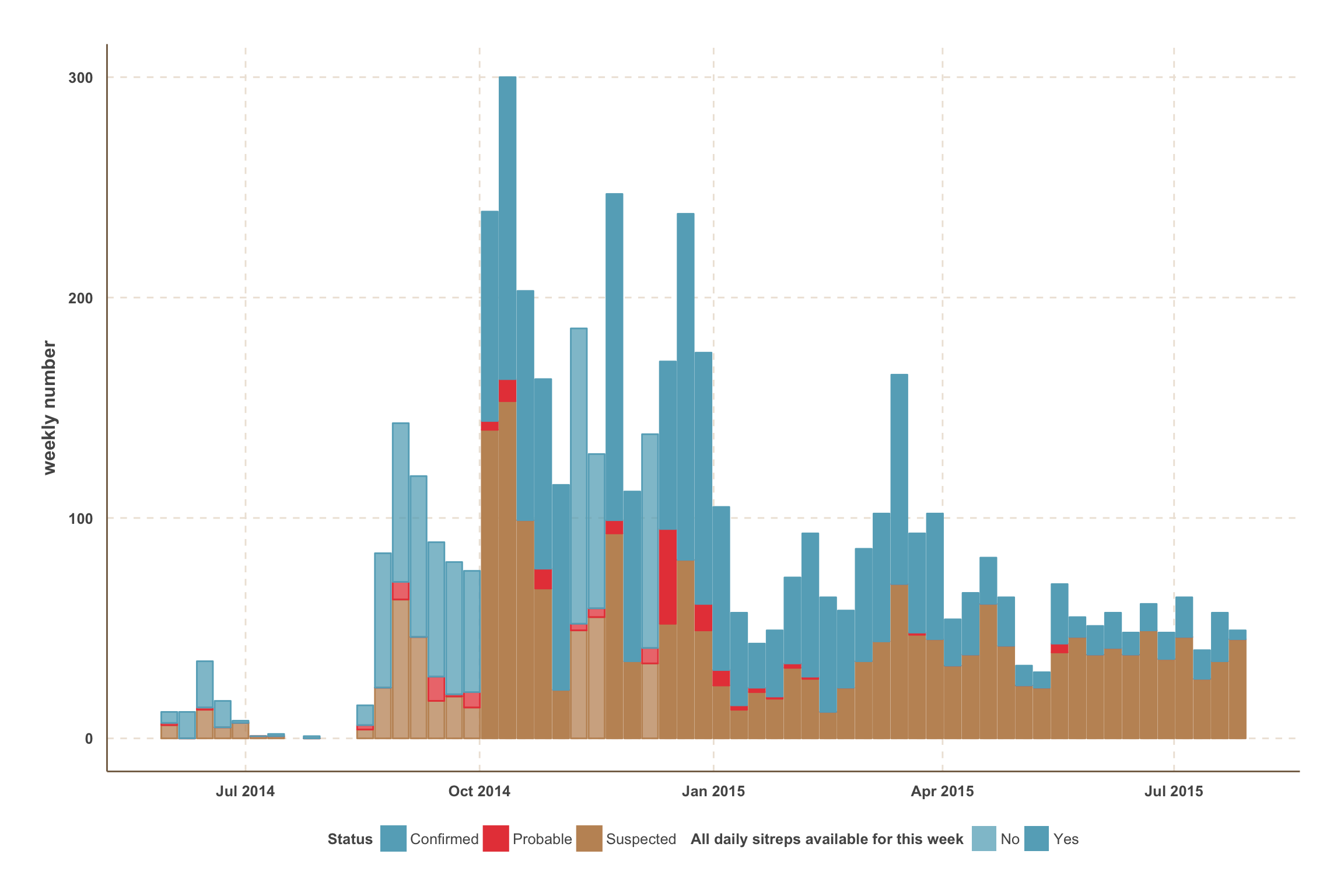
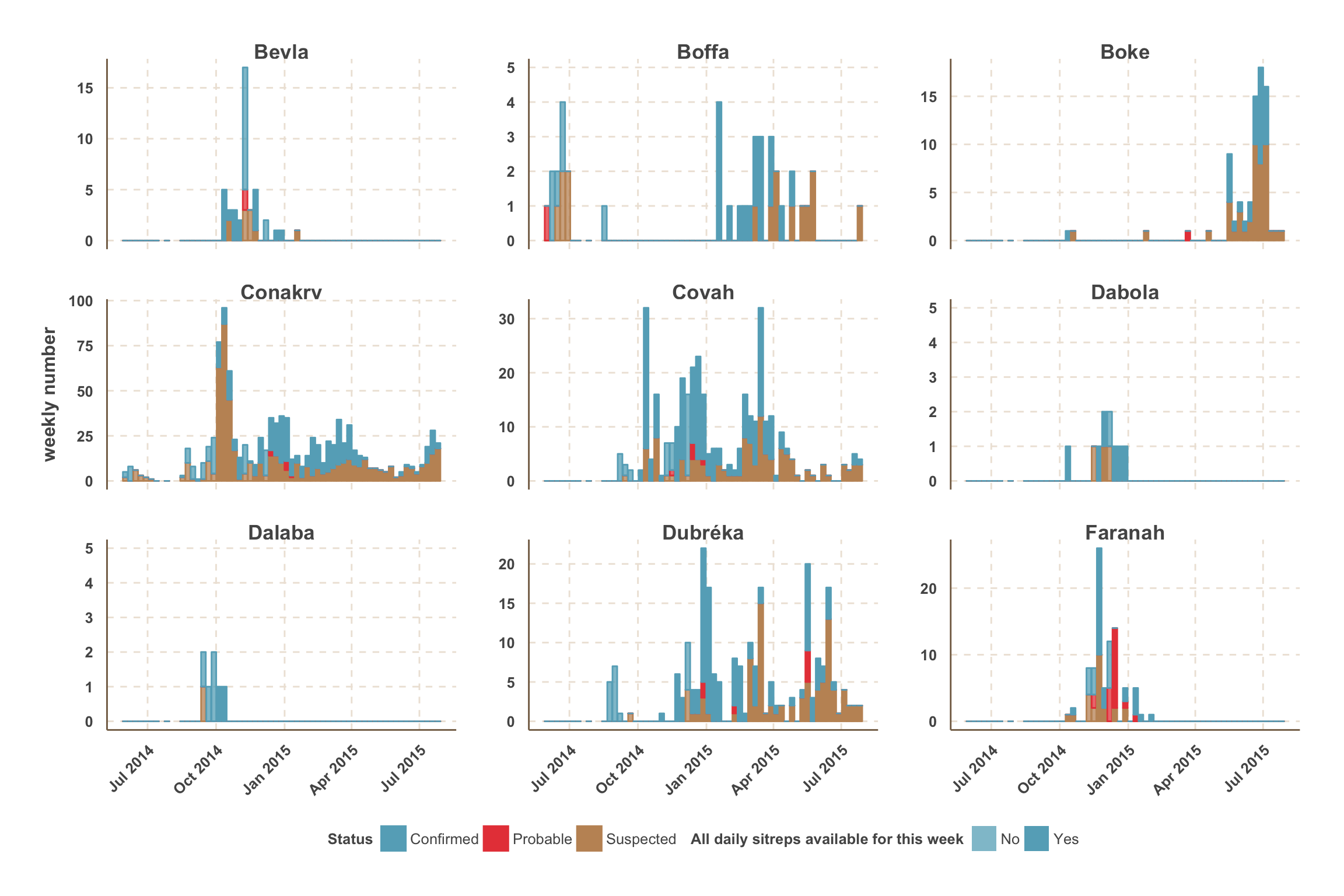
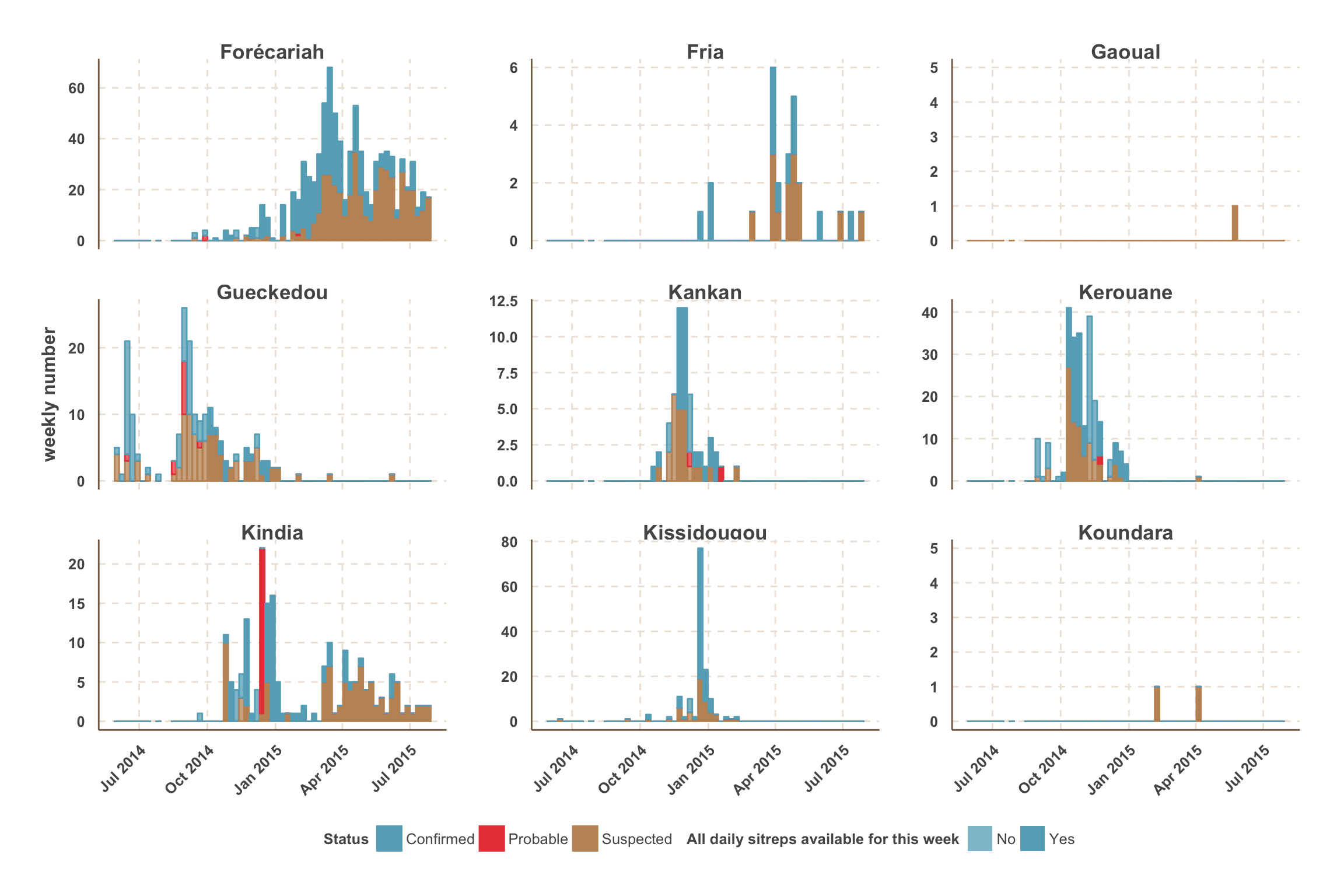
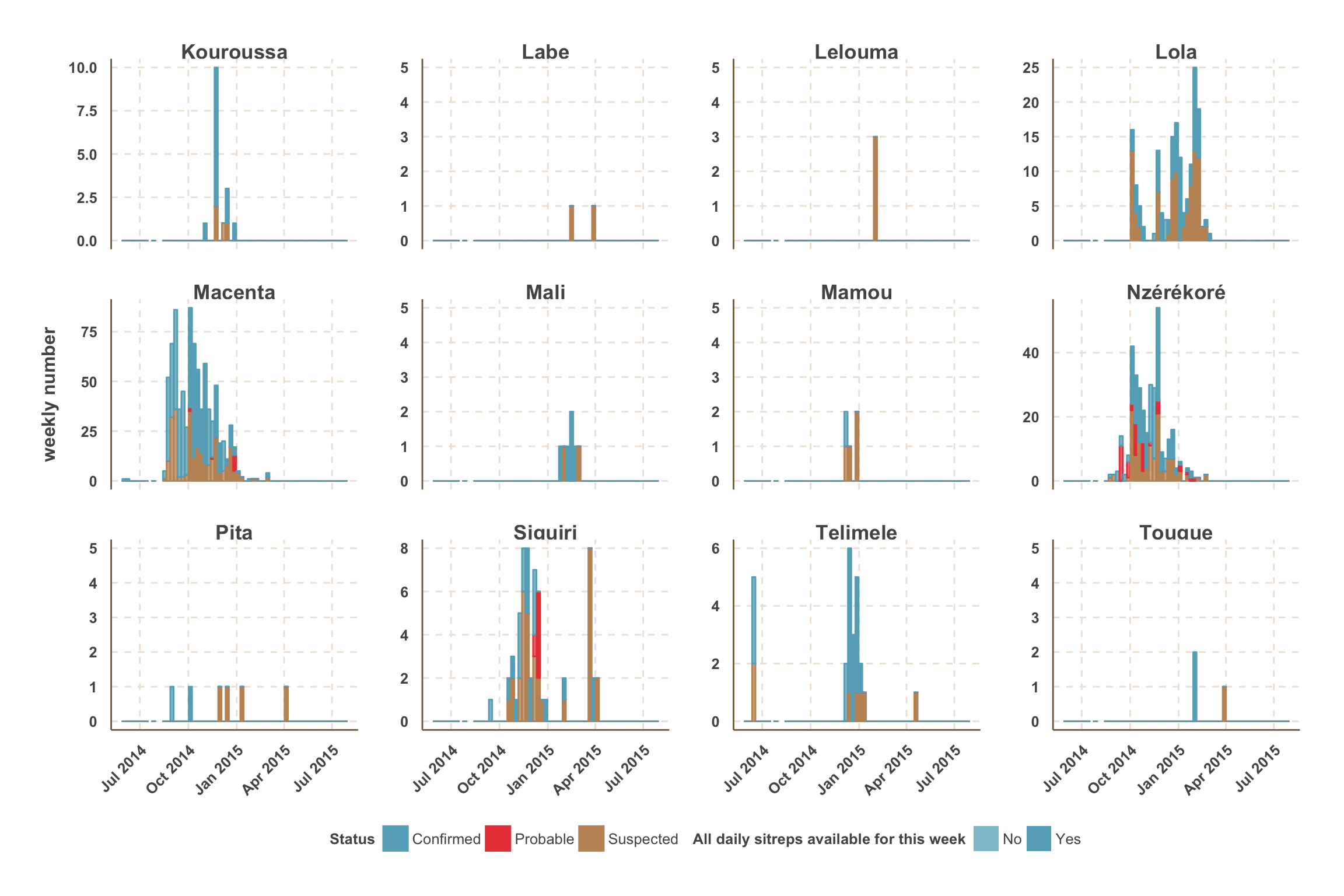
Weekly new deaths
- The status (confirmed, probable, suspected) is not known.
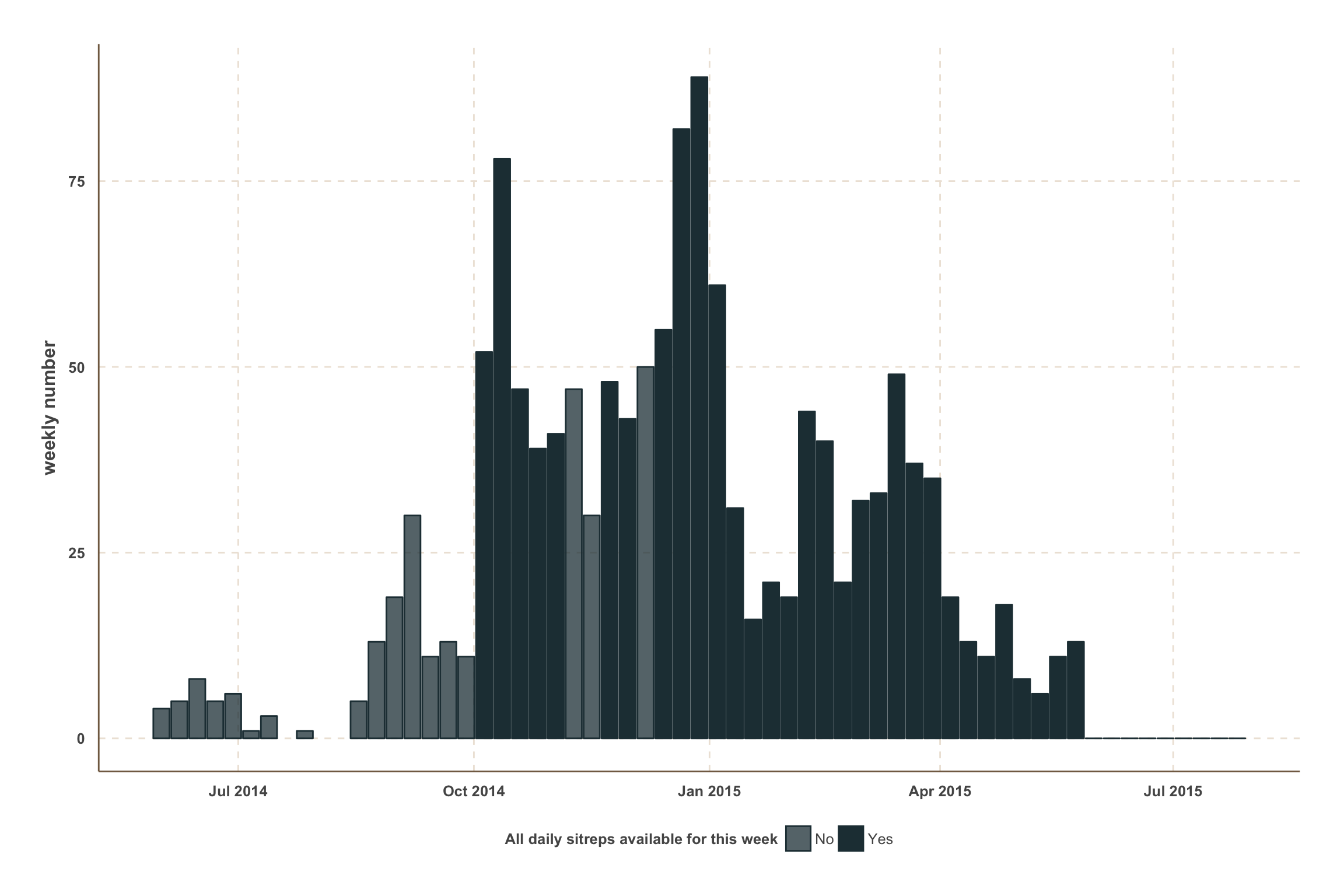
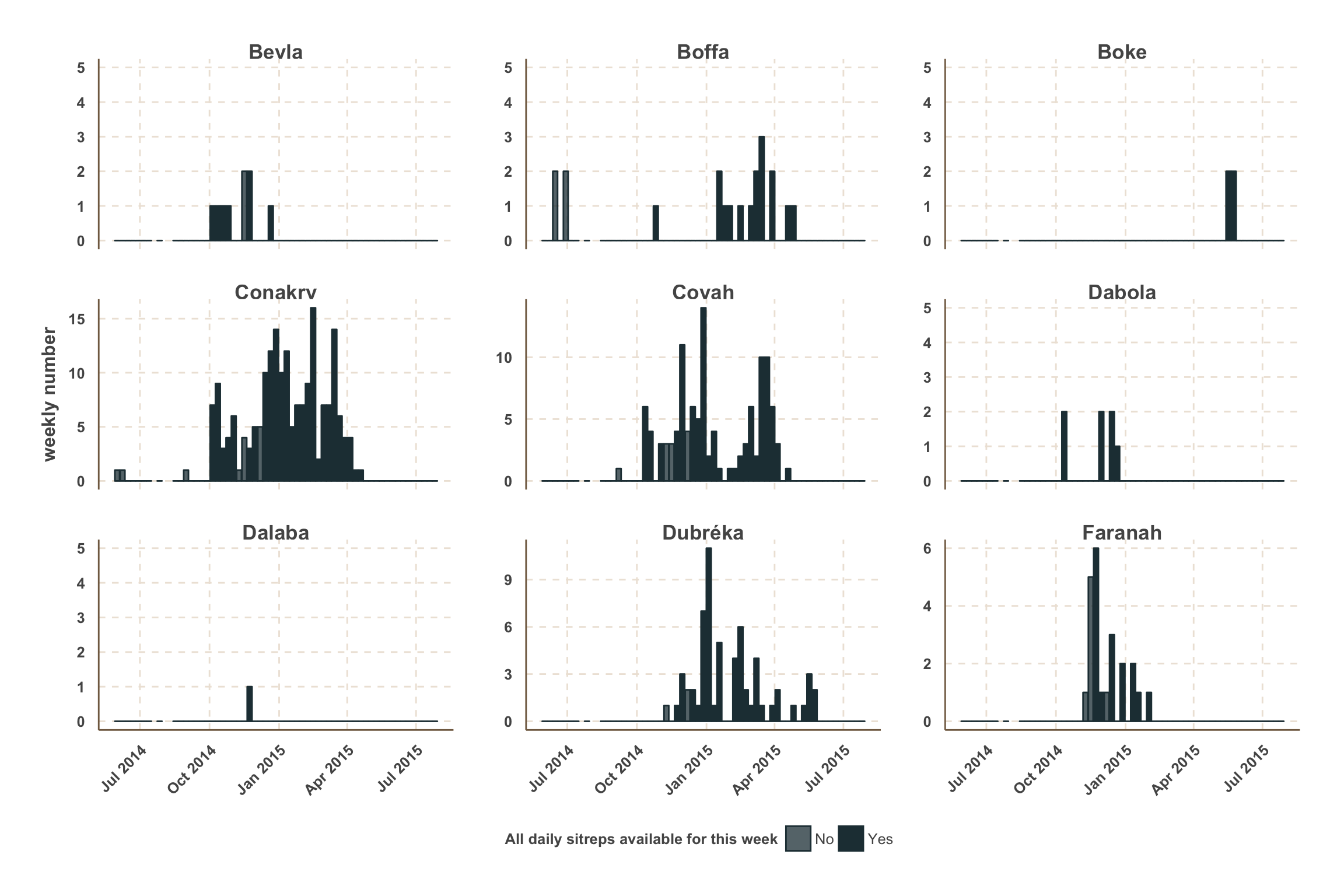
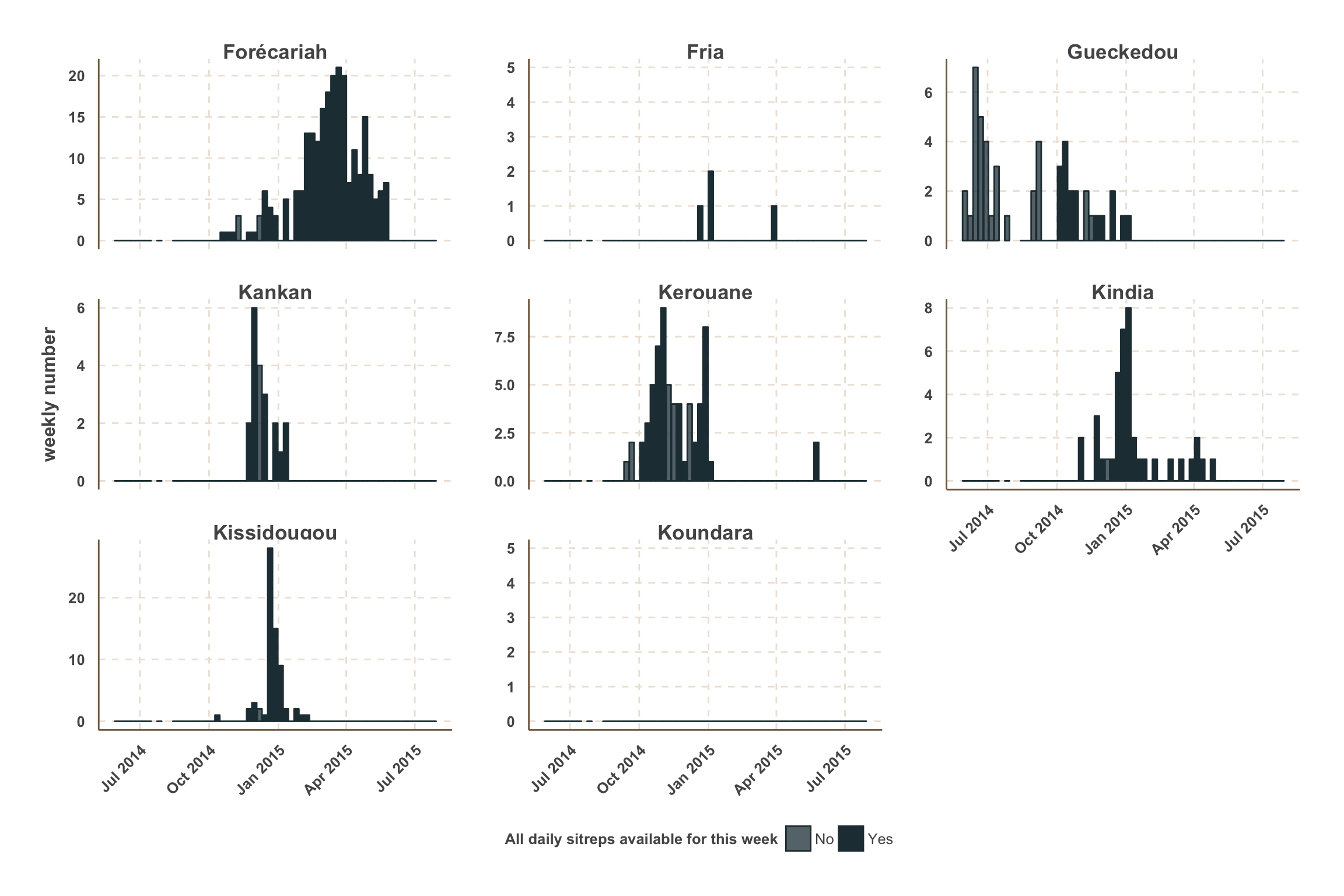
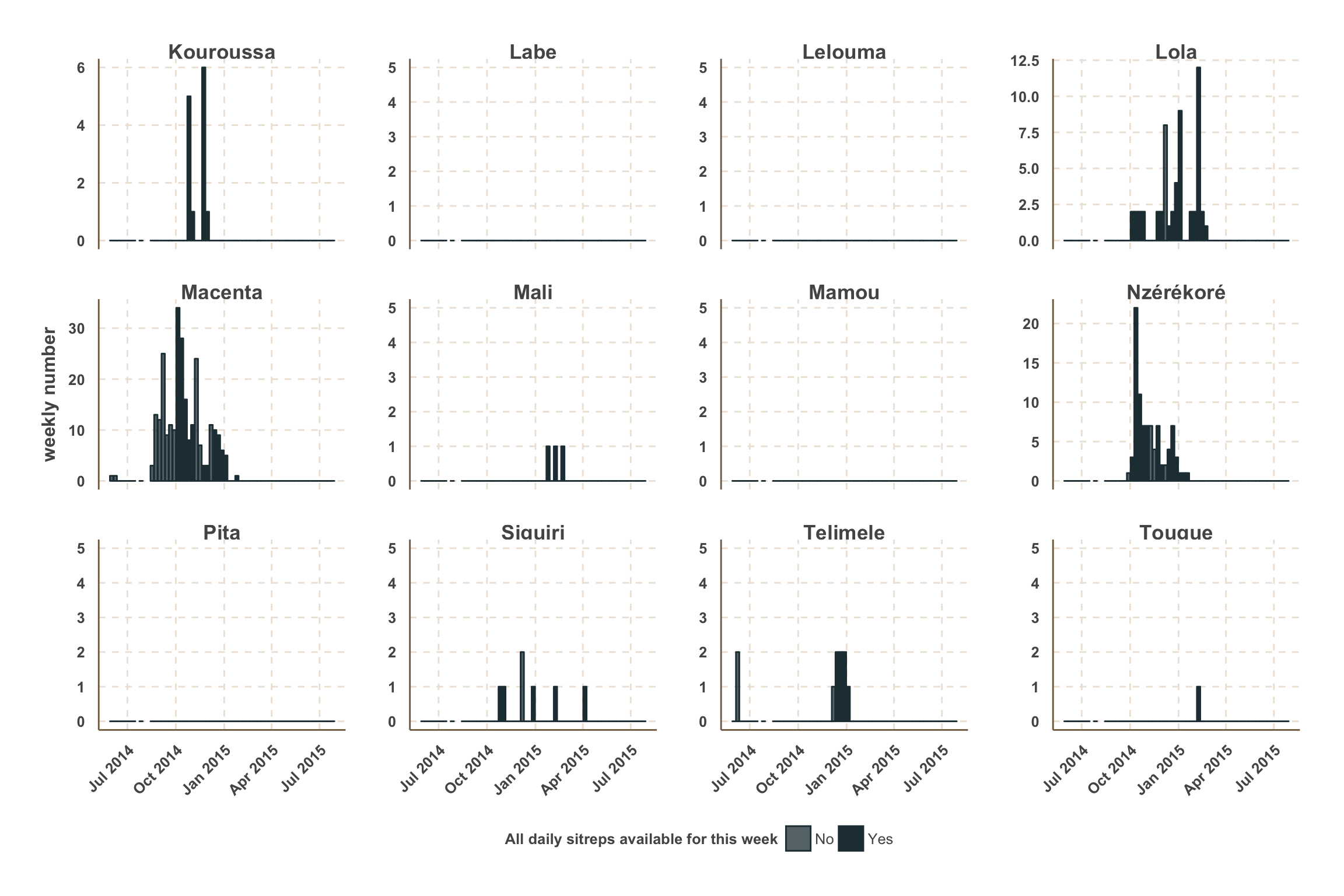
Cumulative cases and deaths
Notes
- Cumulative number of cases and deaths are plotted with a daily time-step using all available SitReps.
- Where possible, cumulative numbers are stacked by case status (confirmed, probable, suspected).
- Cumulative numbers should increase over time. However, the figures show several drops.
- This is due to continuous data cleaning and reclassification of cases status in the MoH line list.
Cumulative confirmed, probable & suspected cases
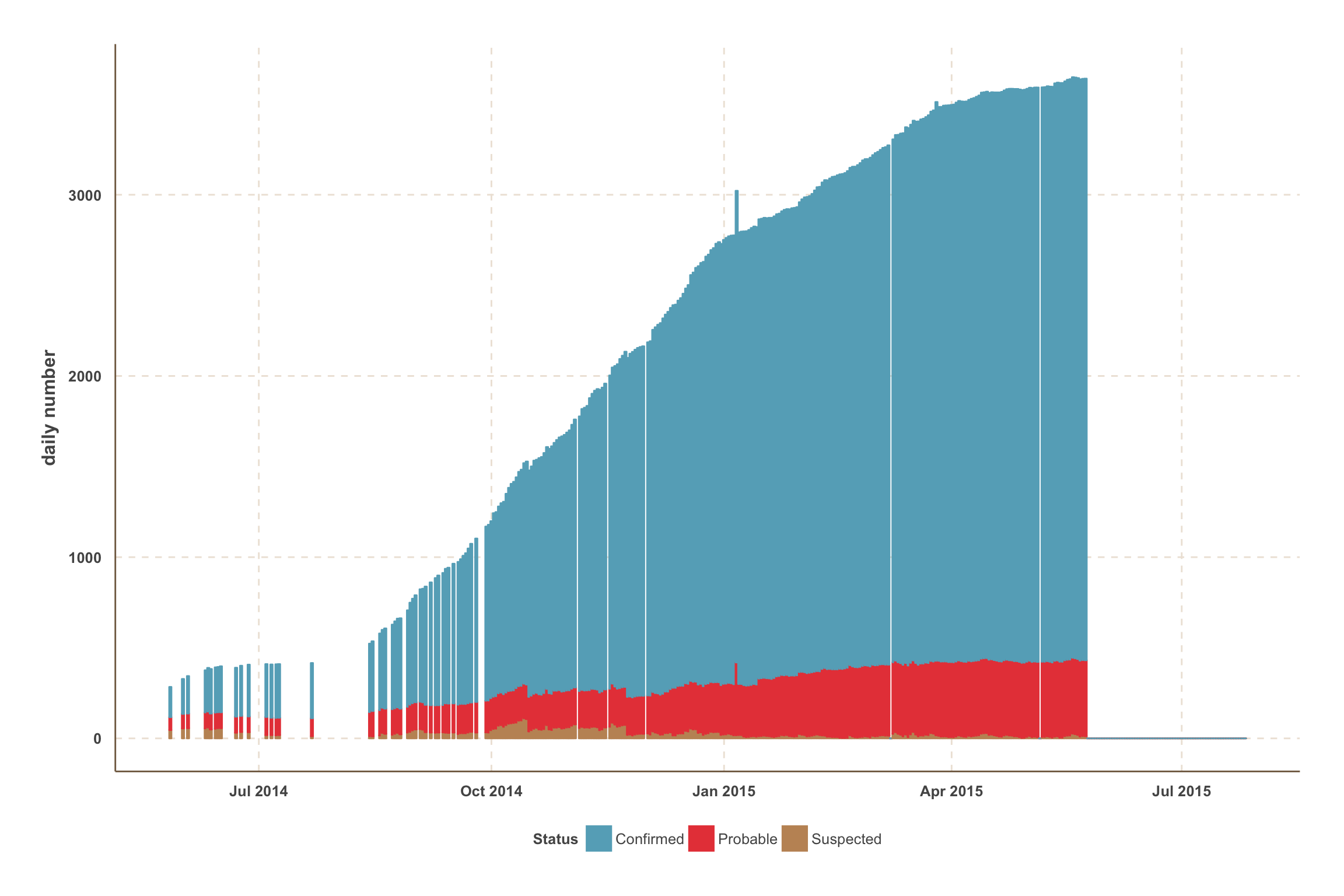
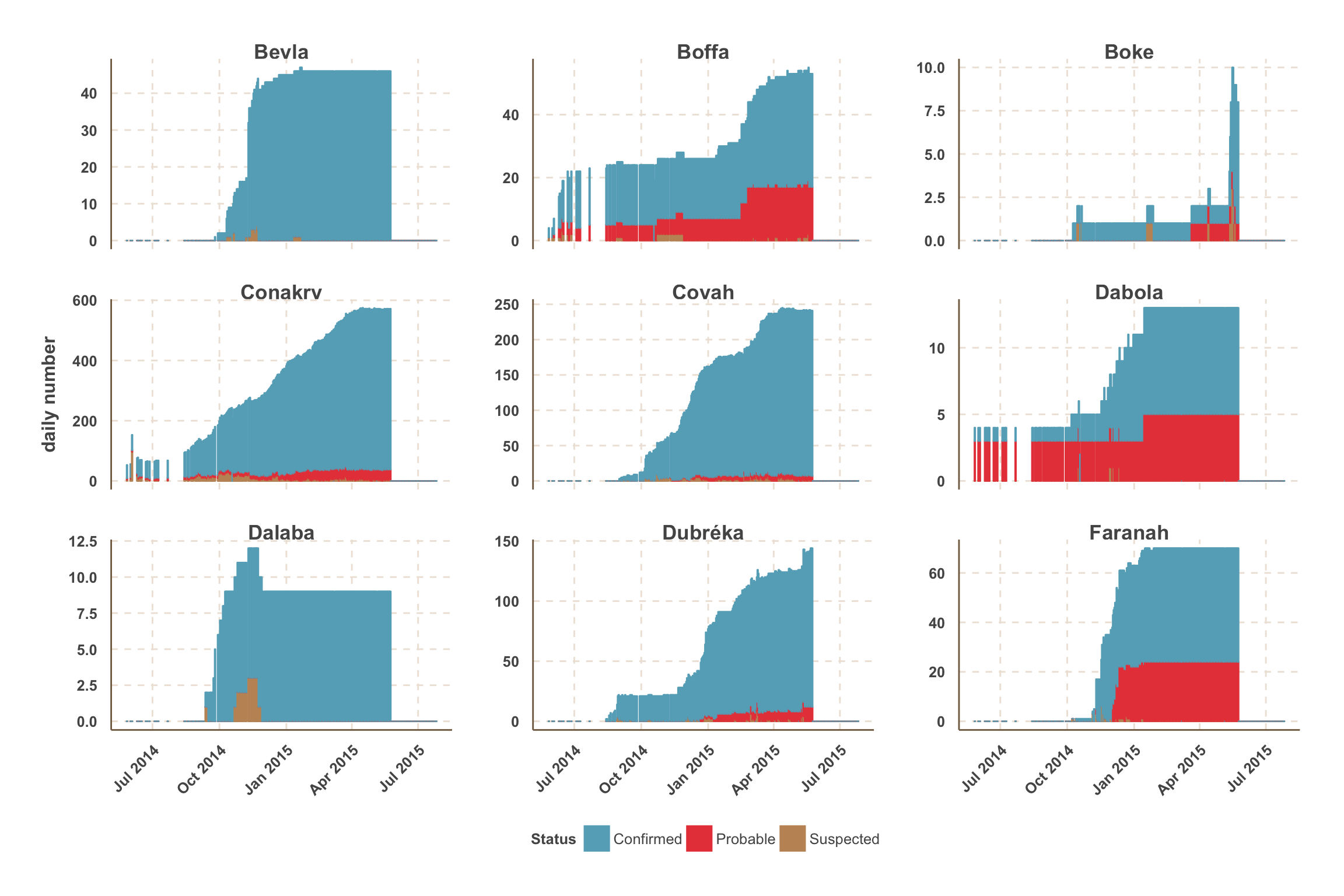
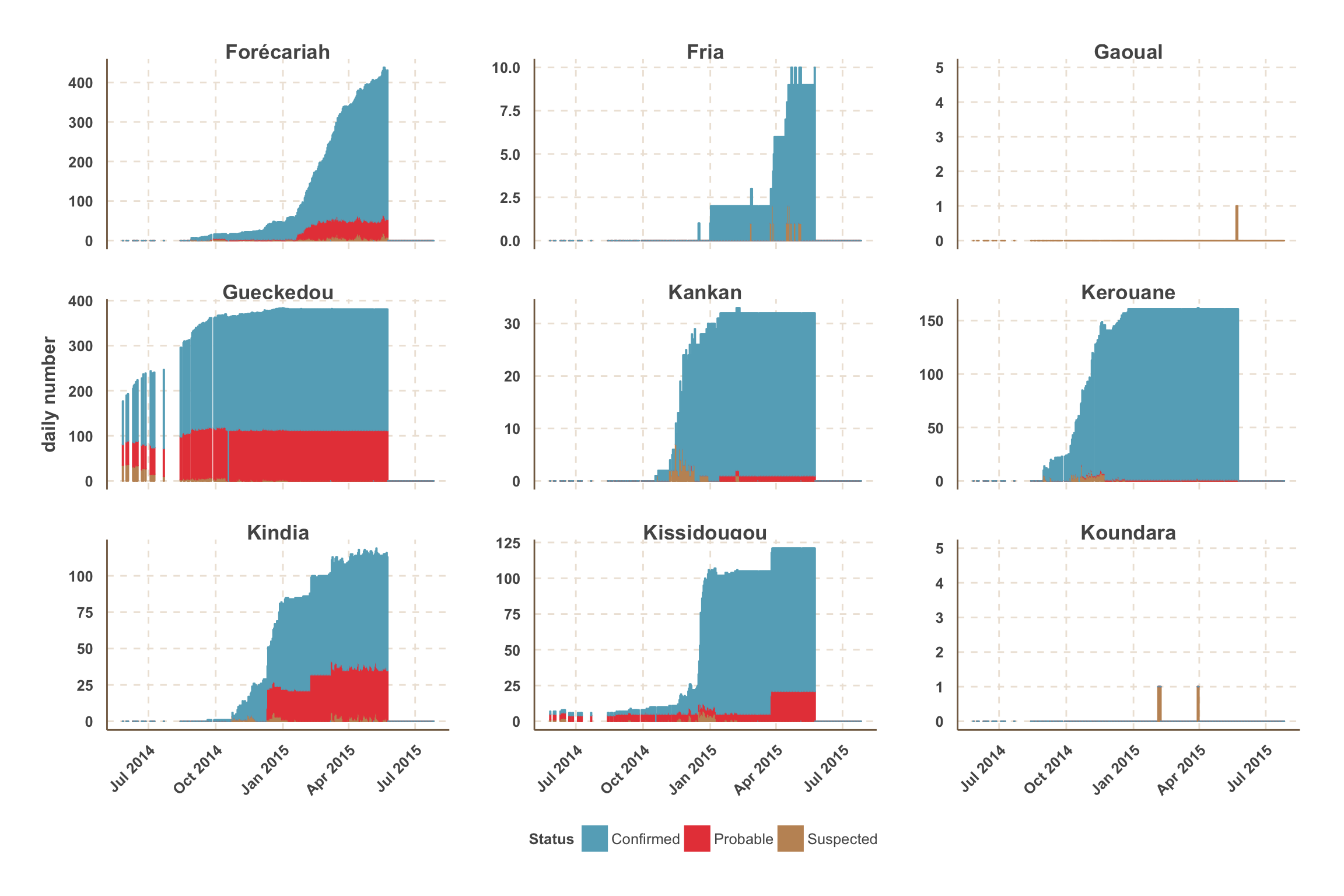
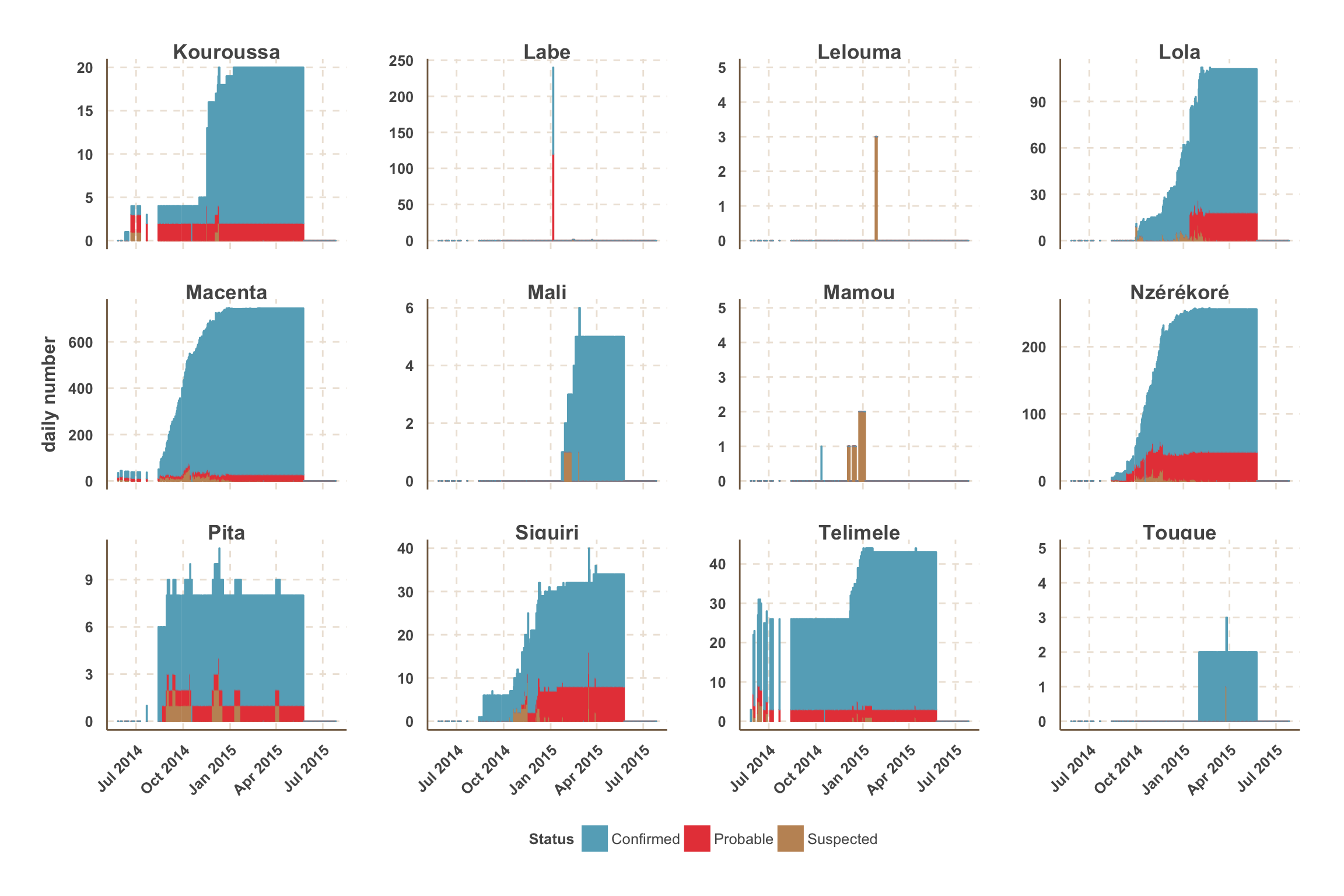
Cumulative confirmed, probable & suspected deaths
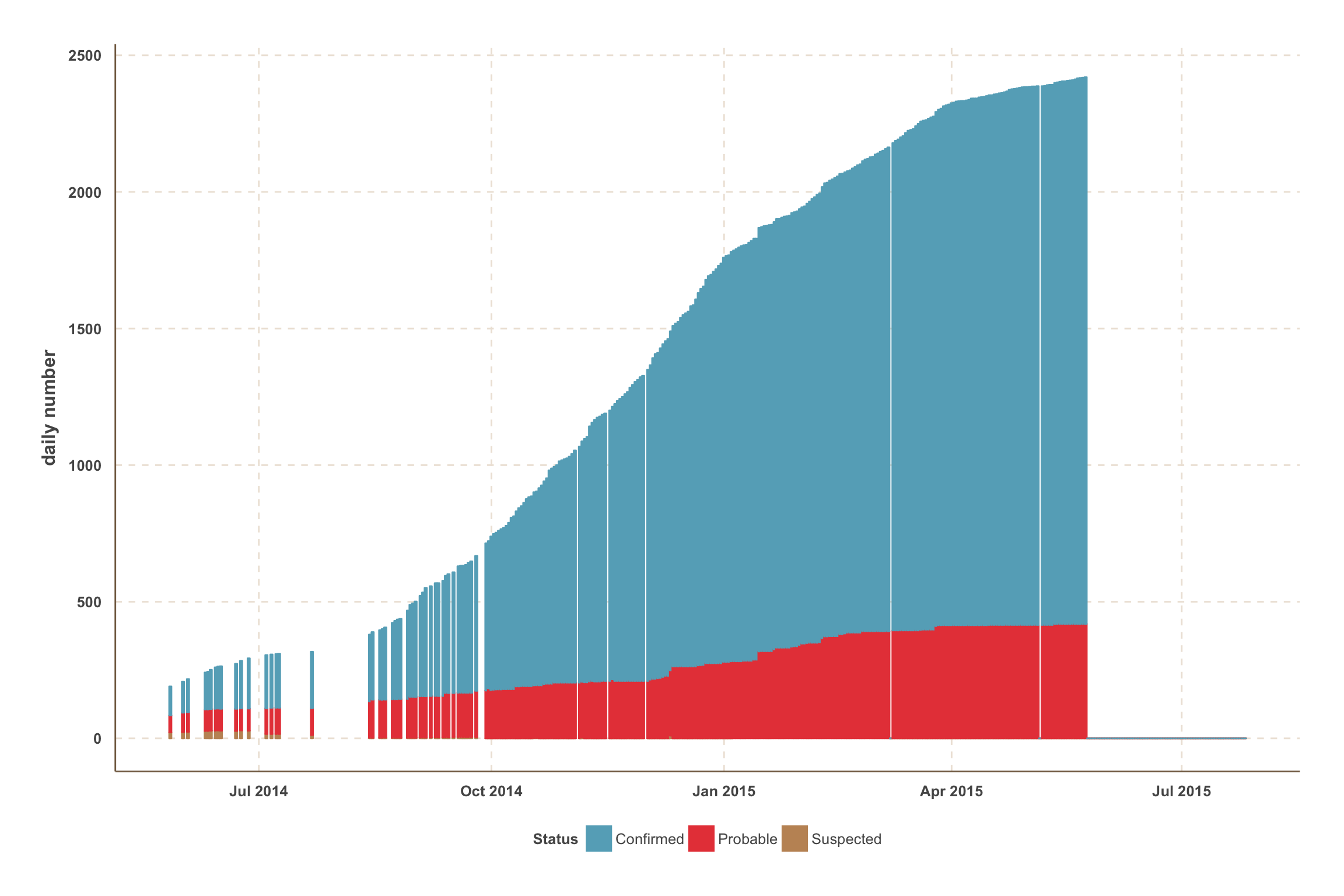
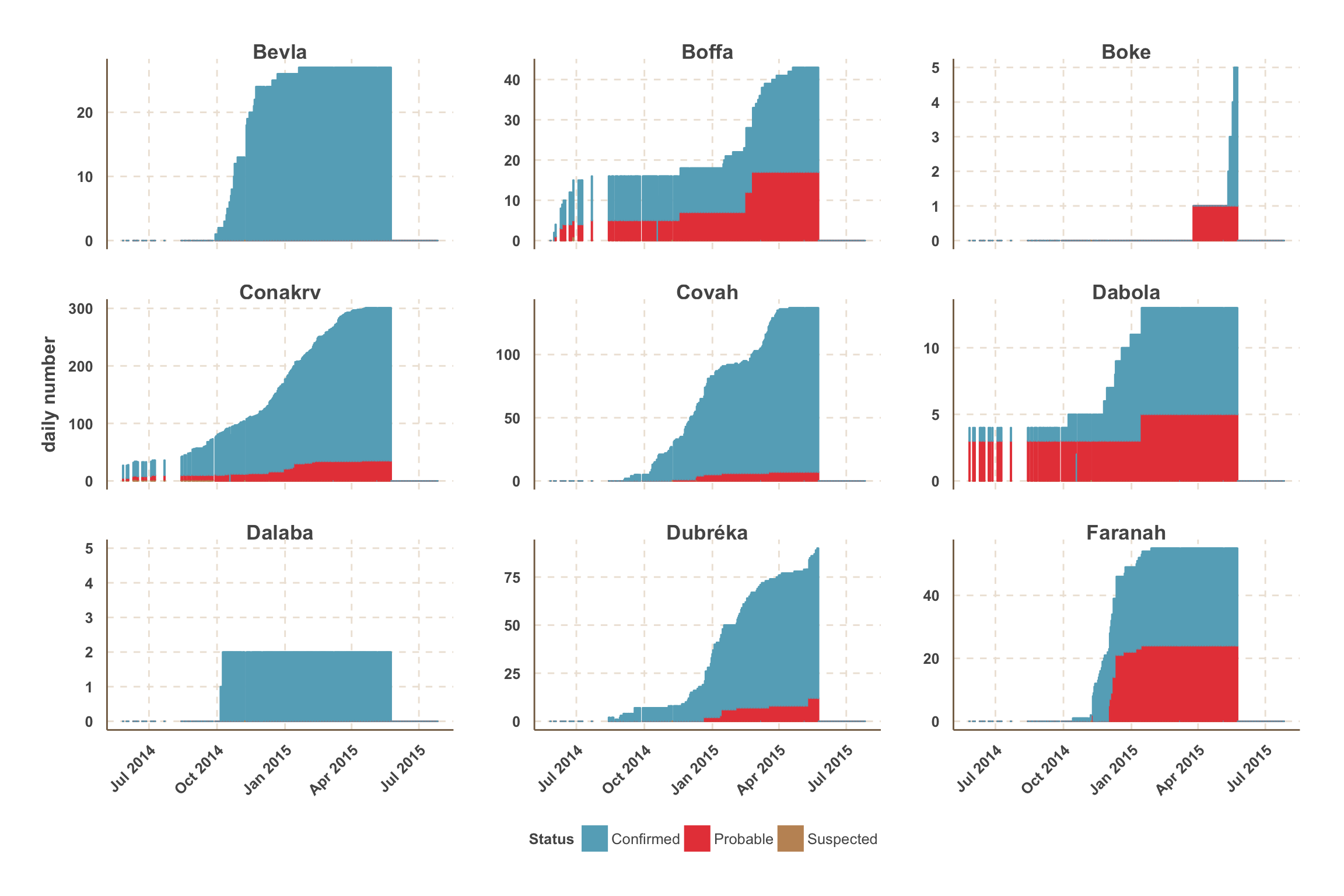
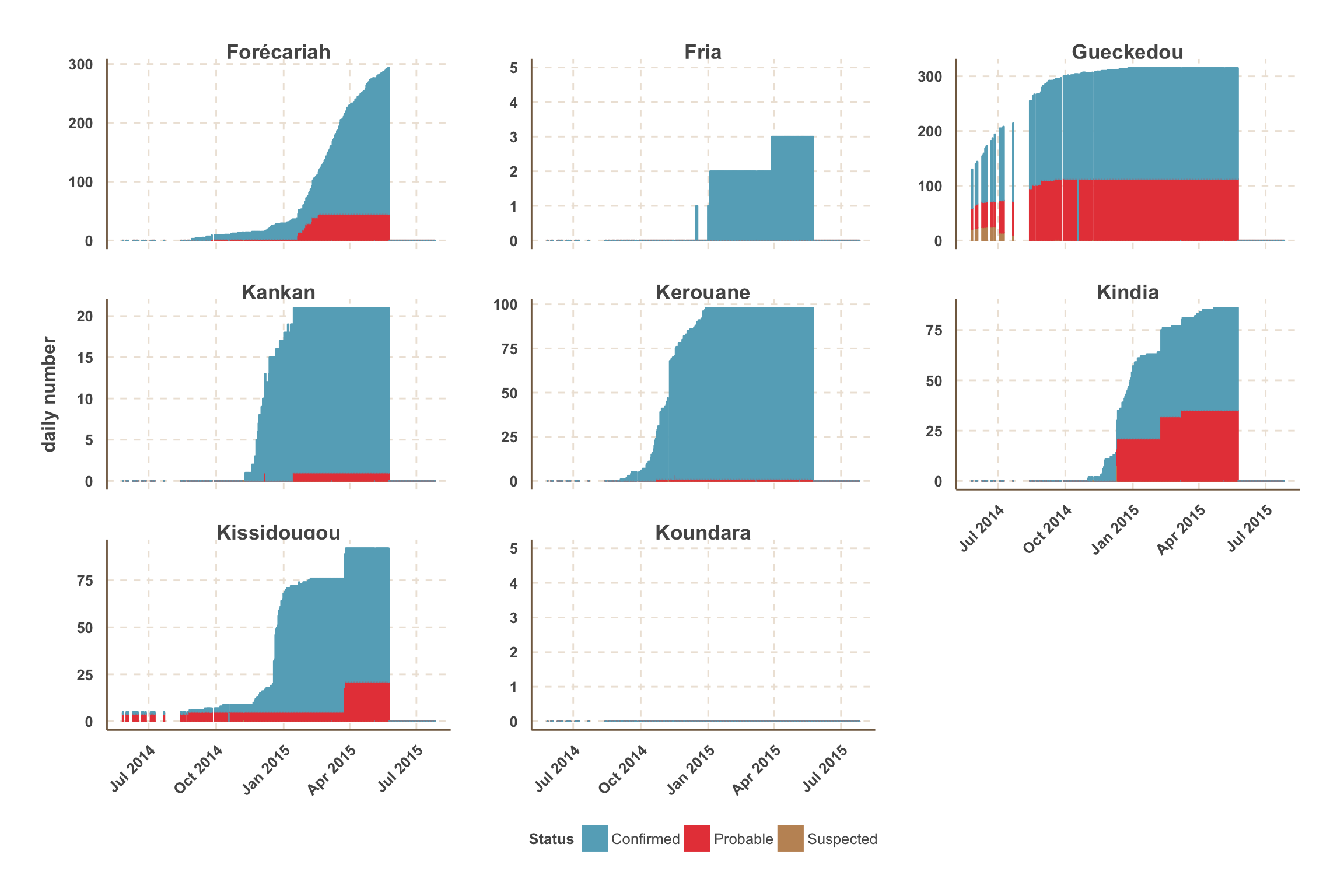
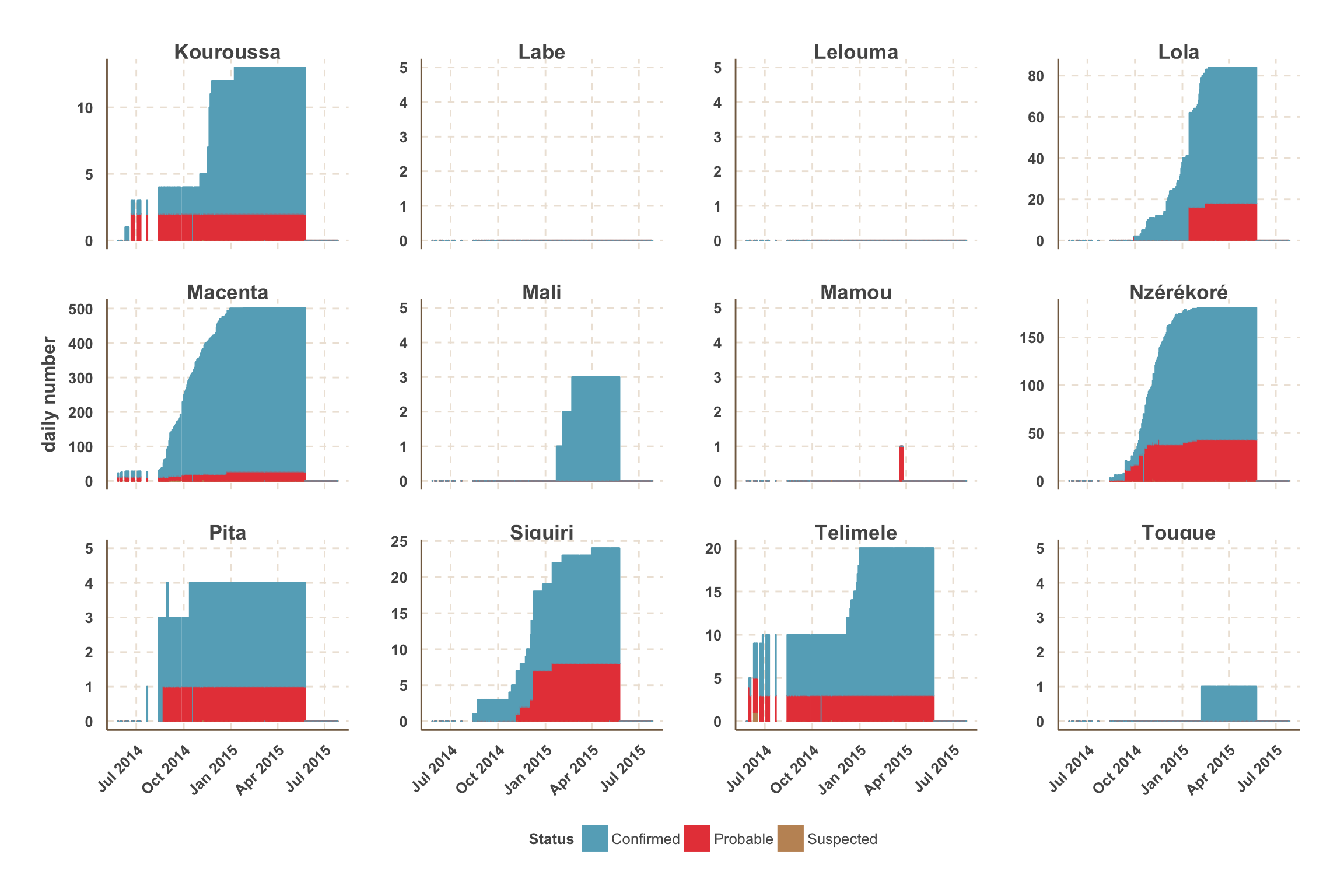
Health-Care Workers
Notes
- New and cumulative cases/deaths are available for health-care worker.
- The status (confirmed, probable, suspected) is not known.
Weekly new cases among Health-Care Workers
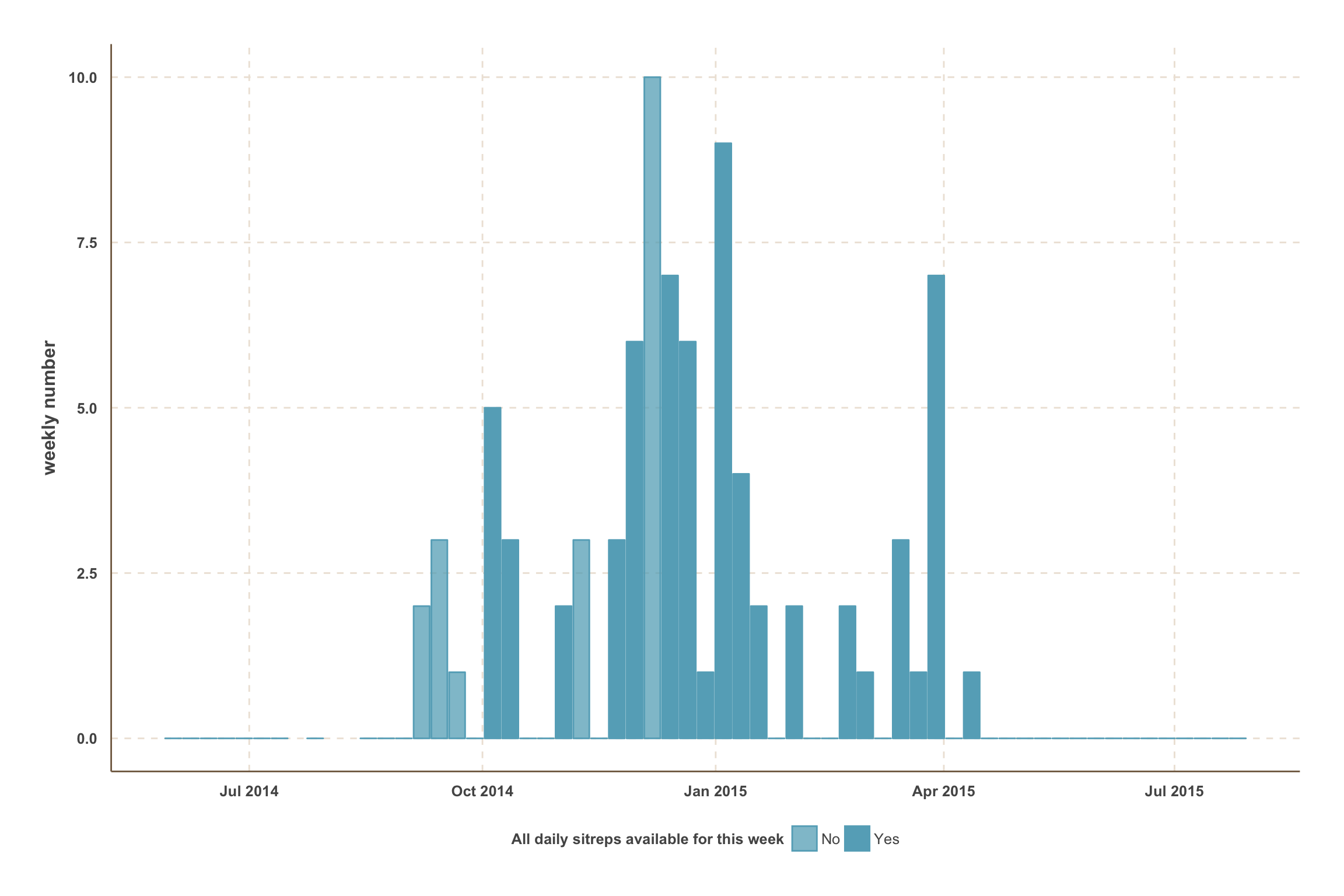
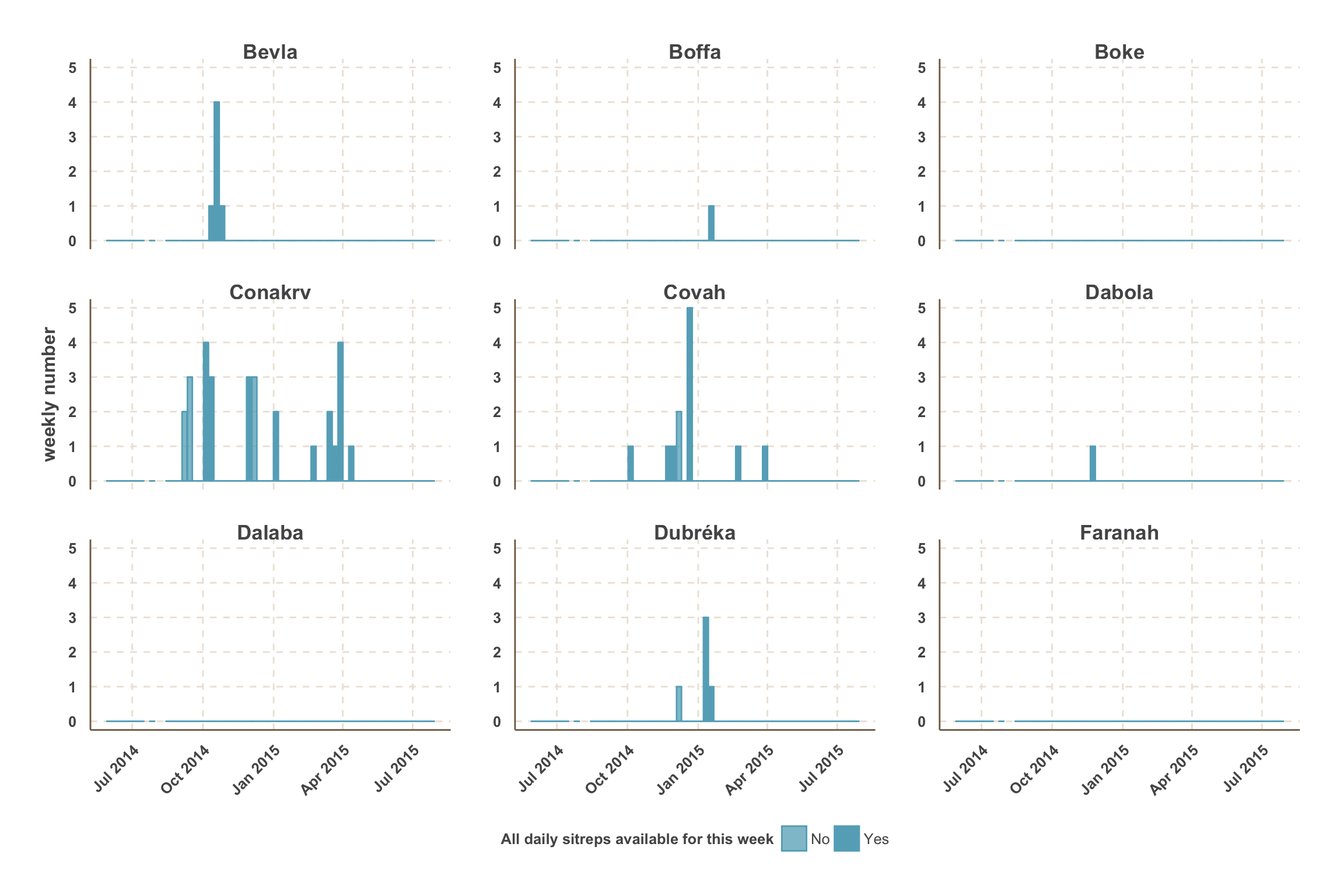
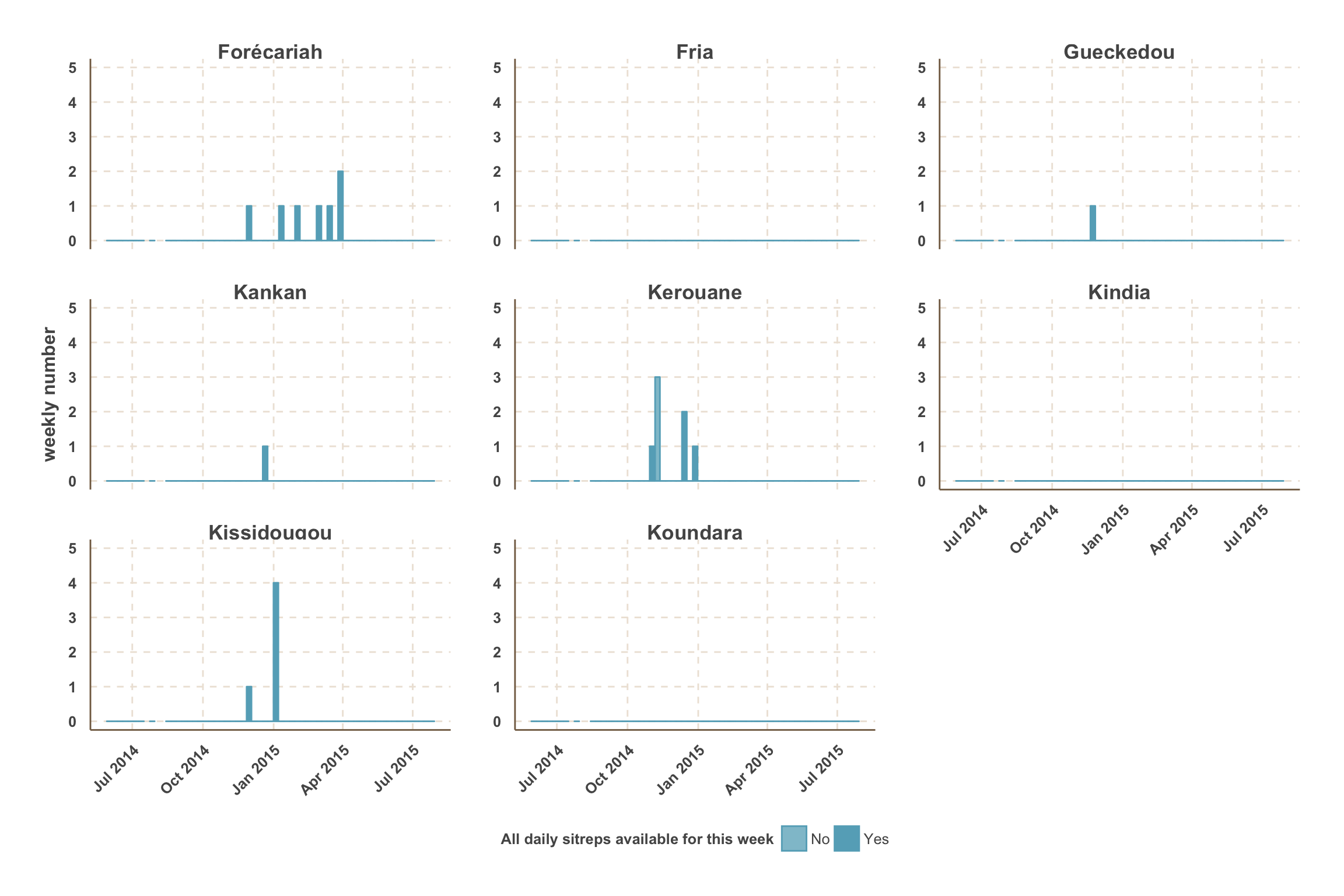
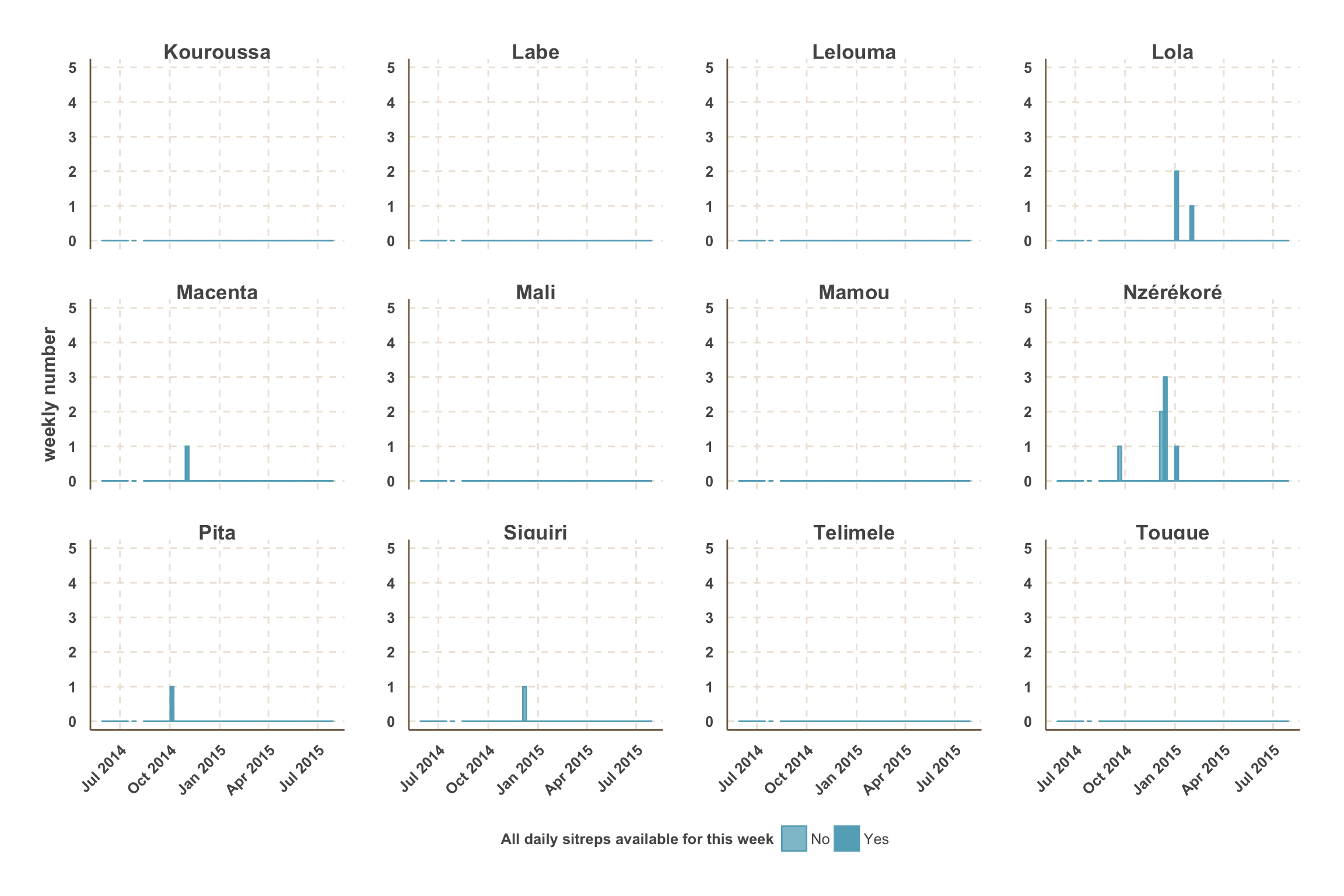
Weekly new deaths among Health-Care Workers
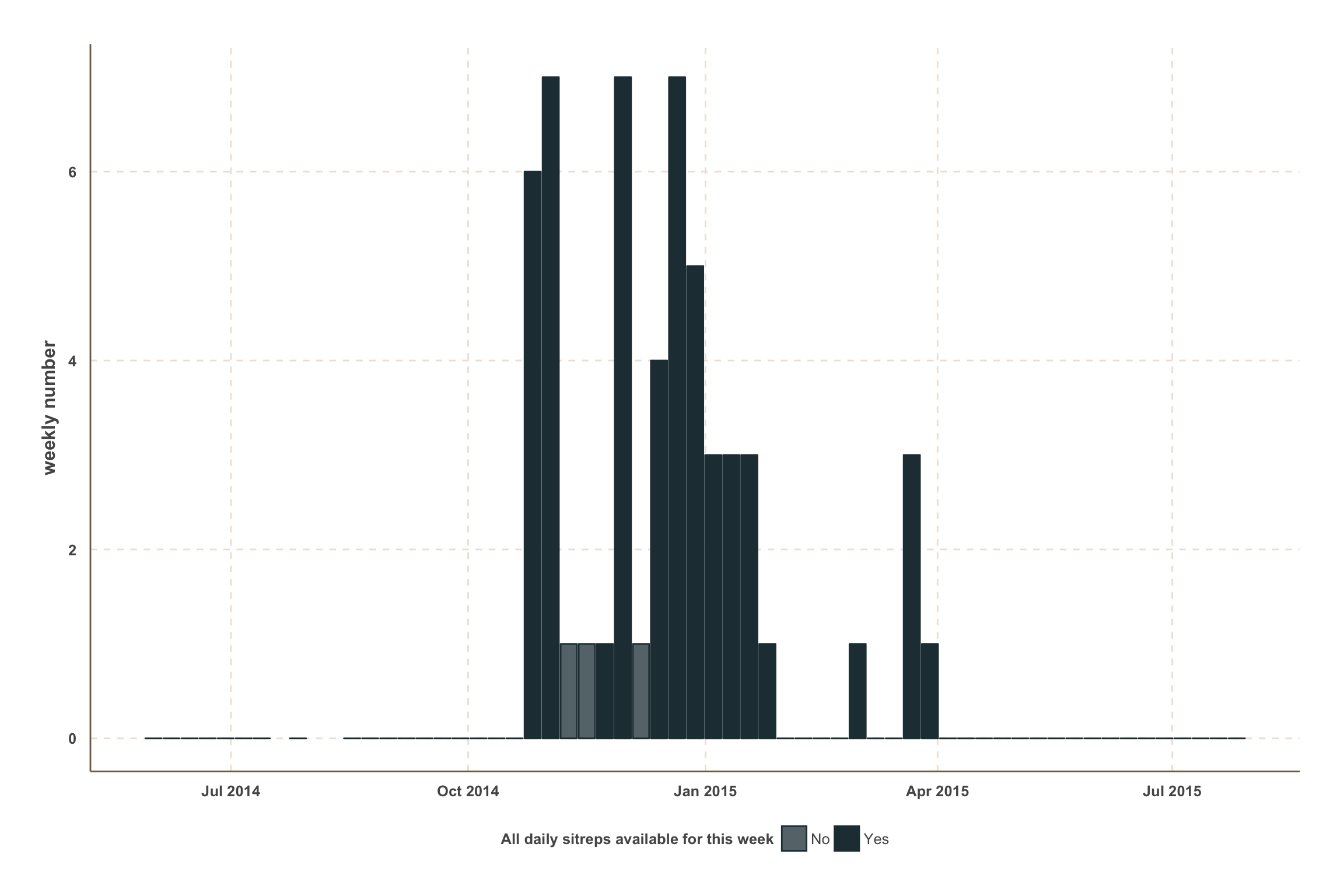
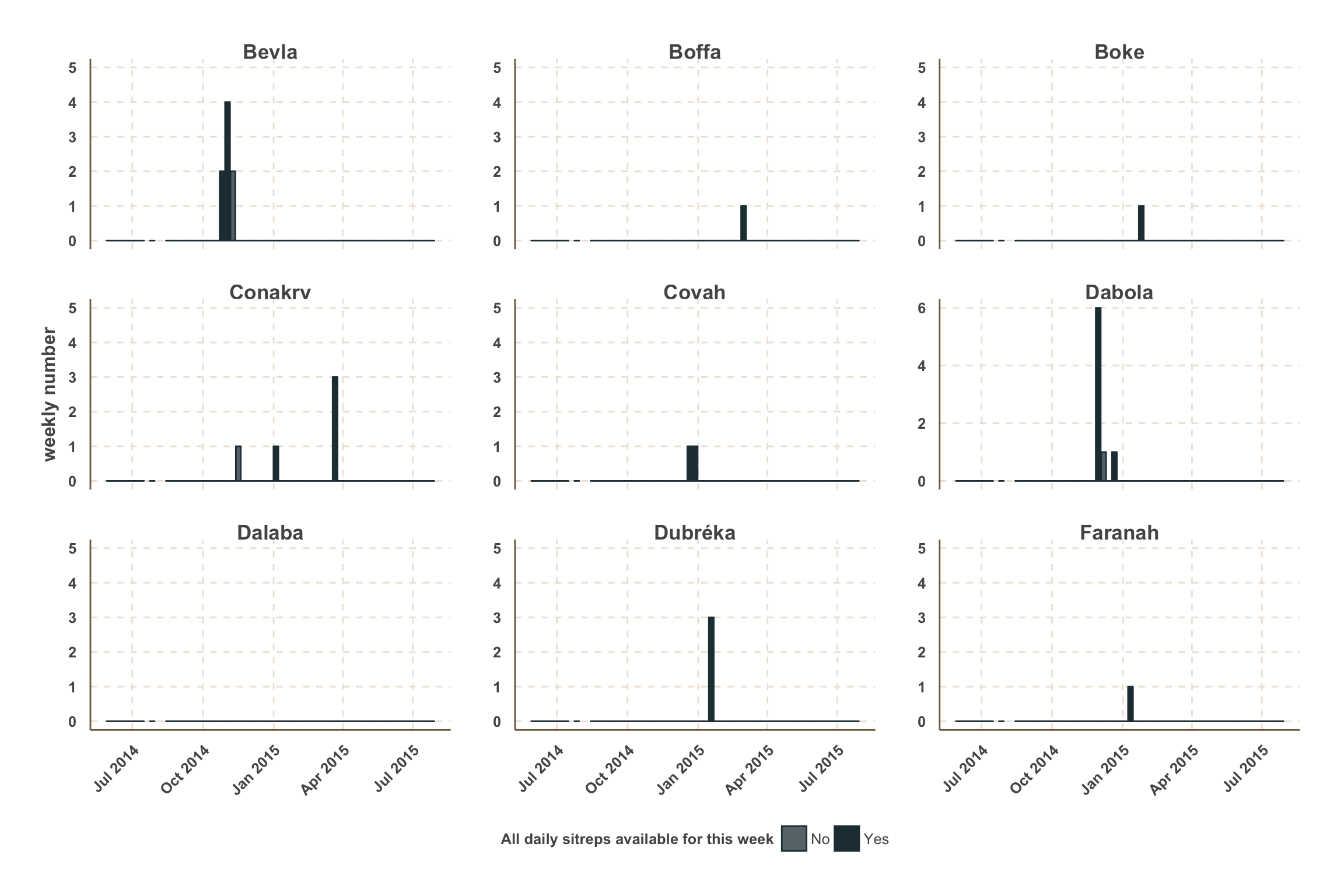
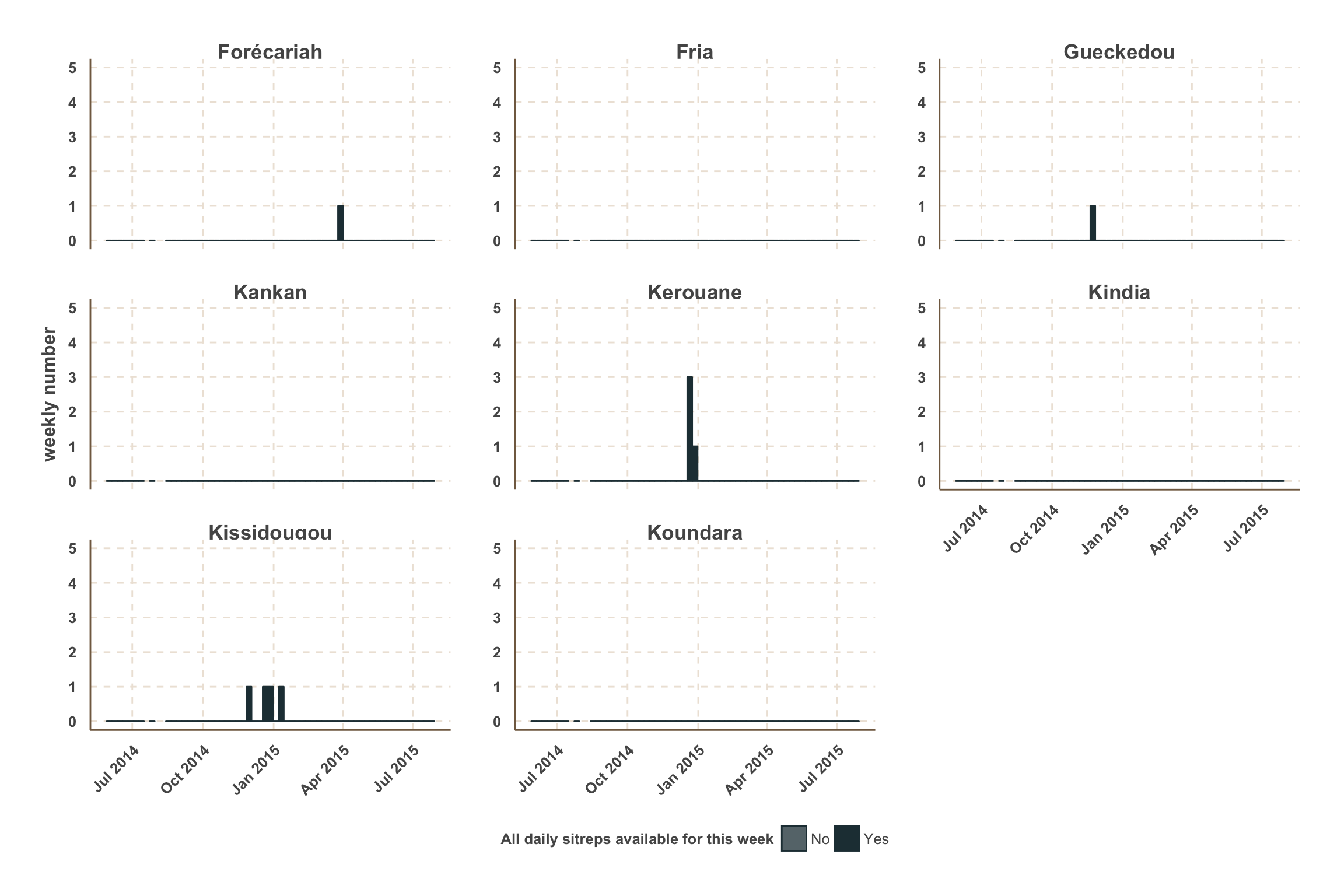
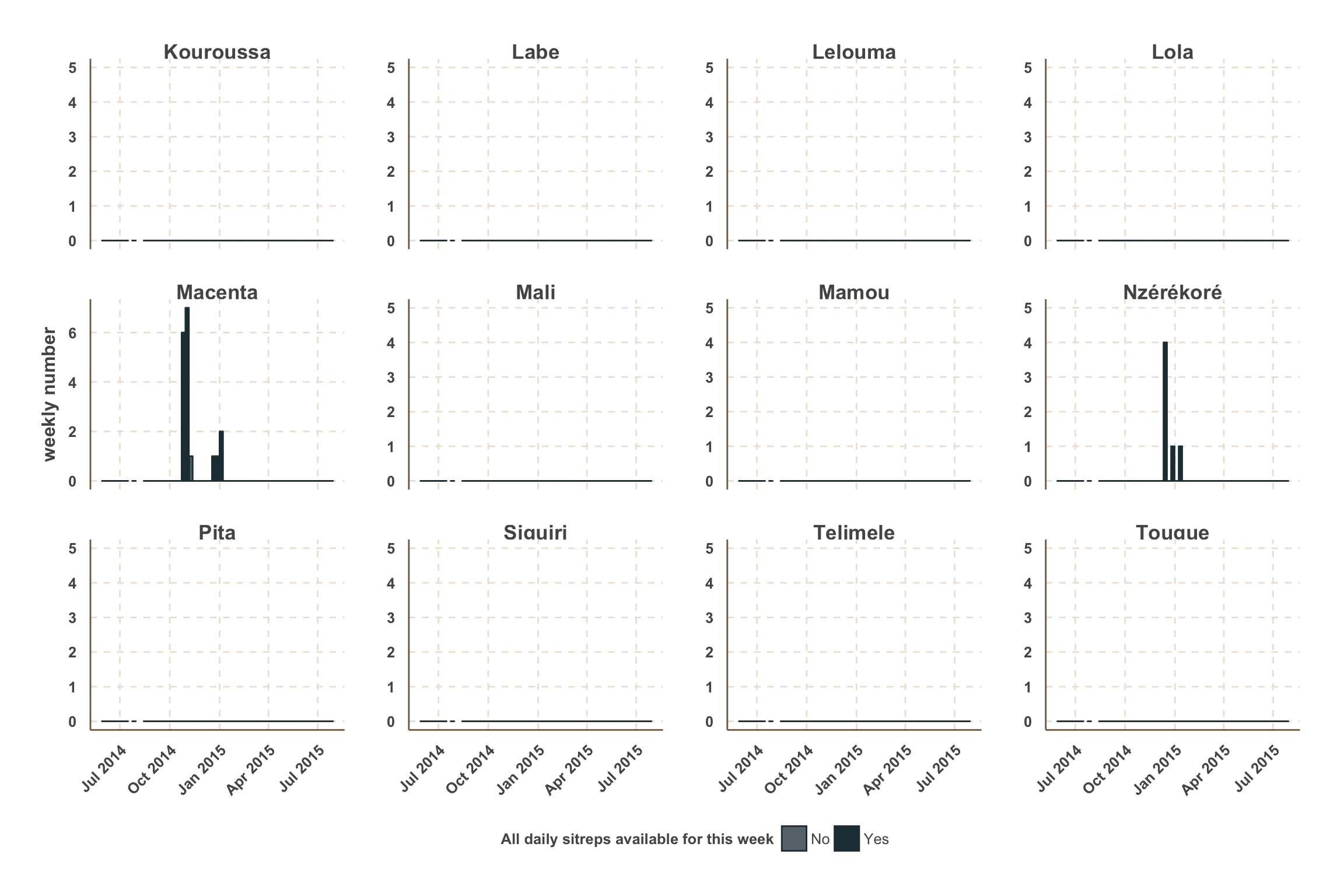
Cumulative cases among Health-Care Workers
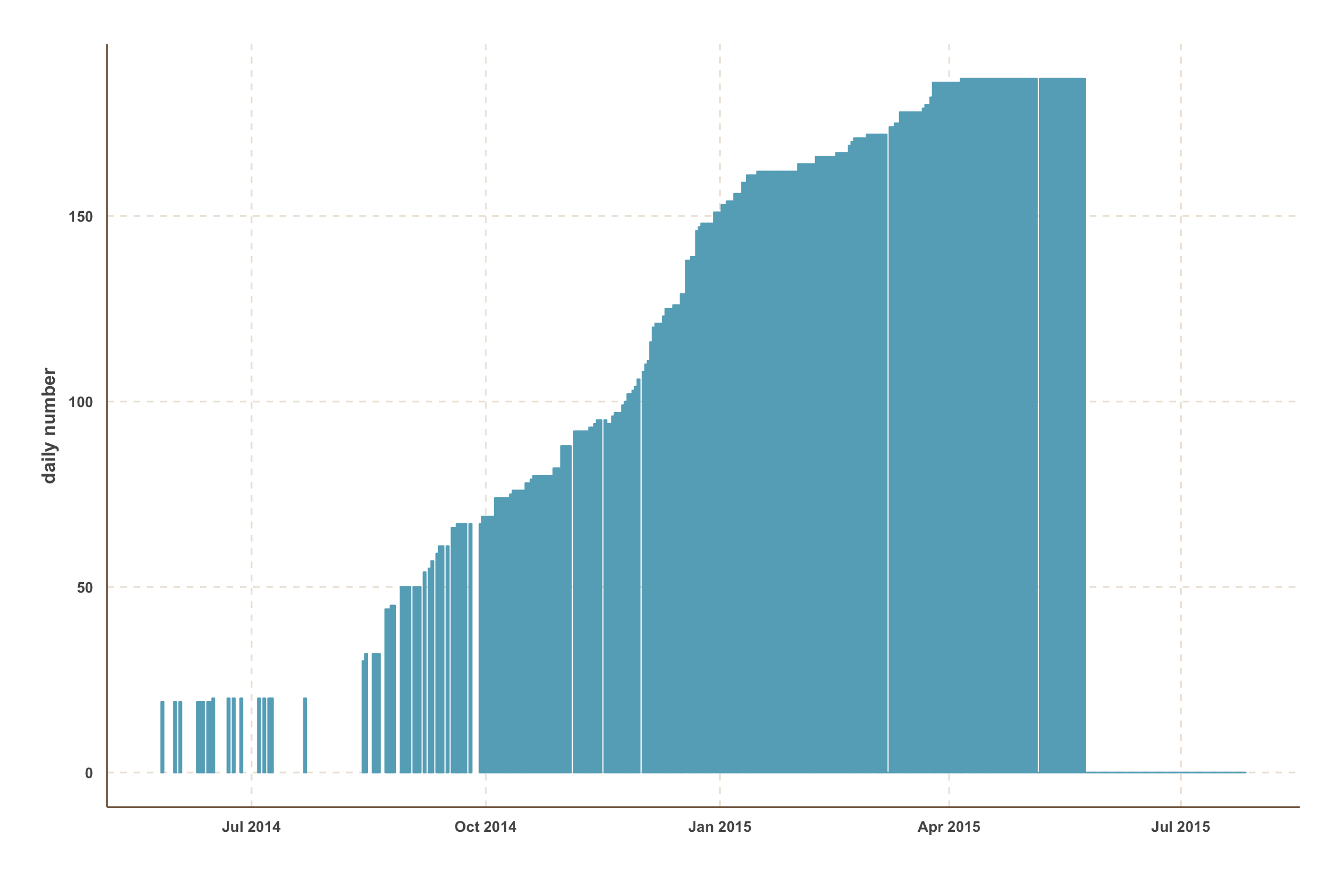
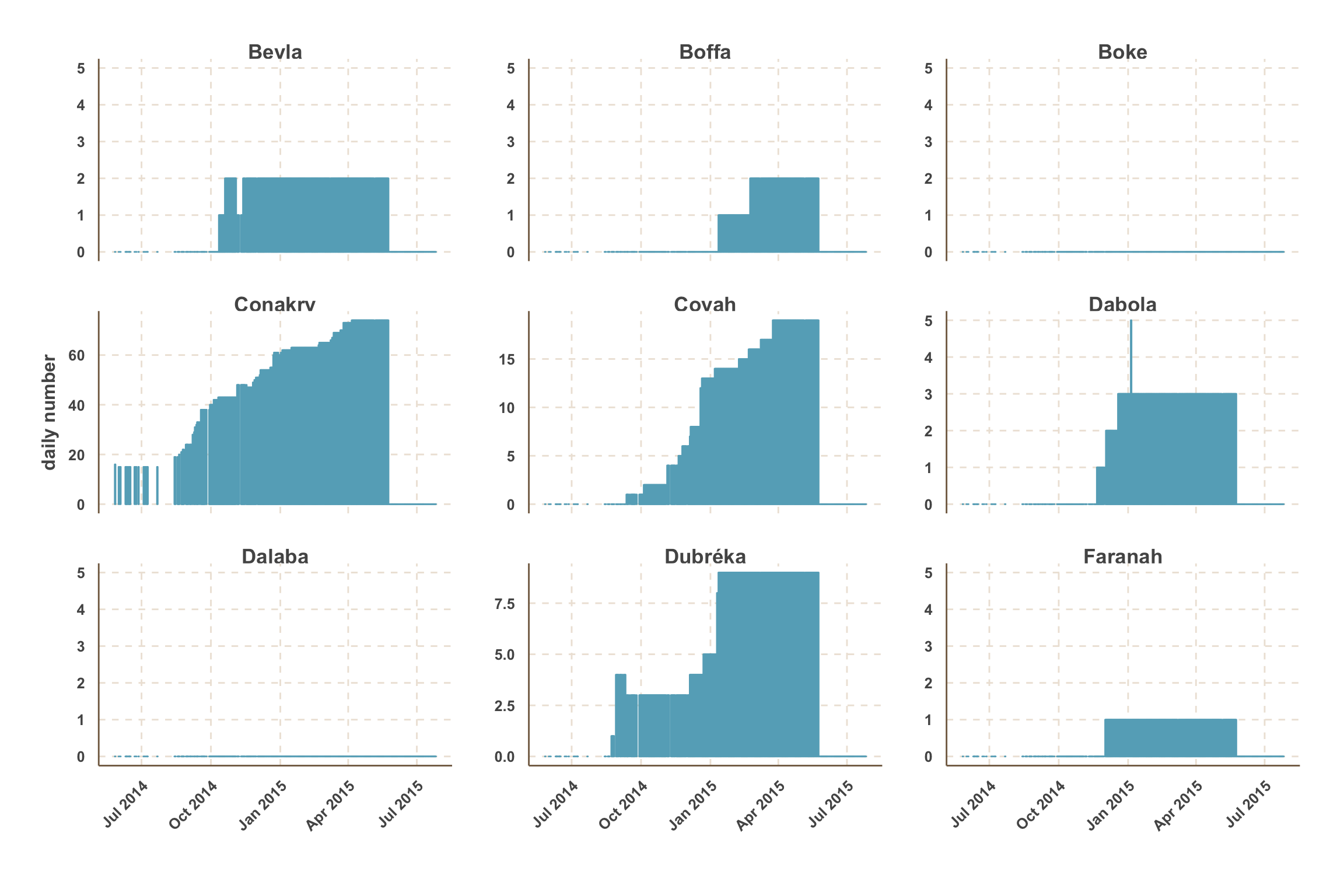
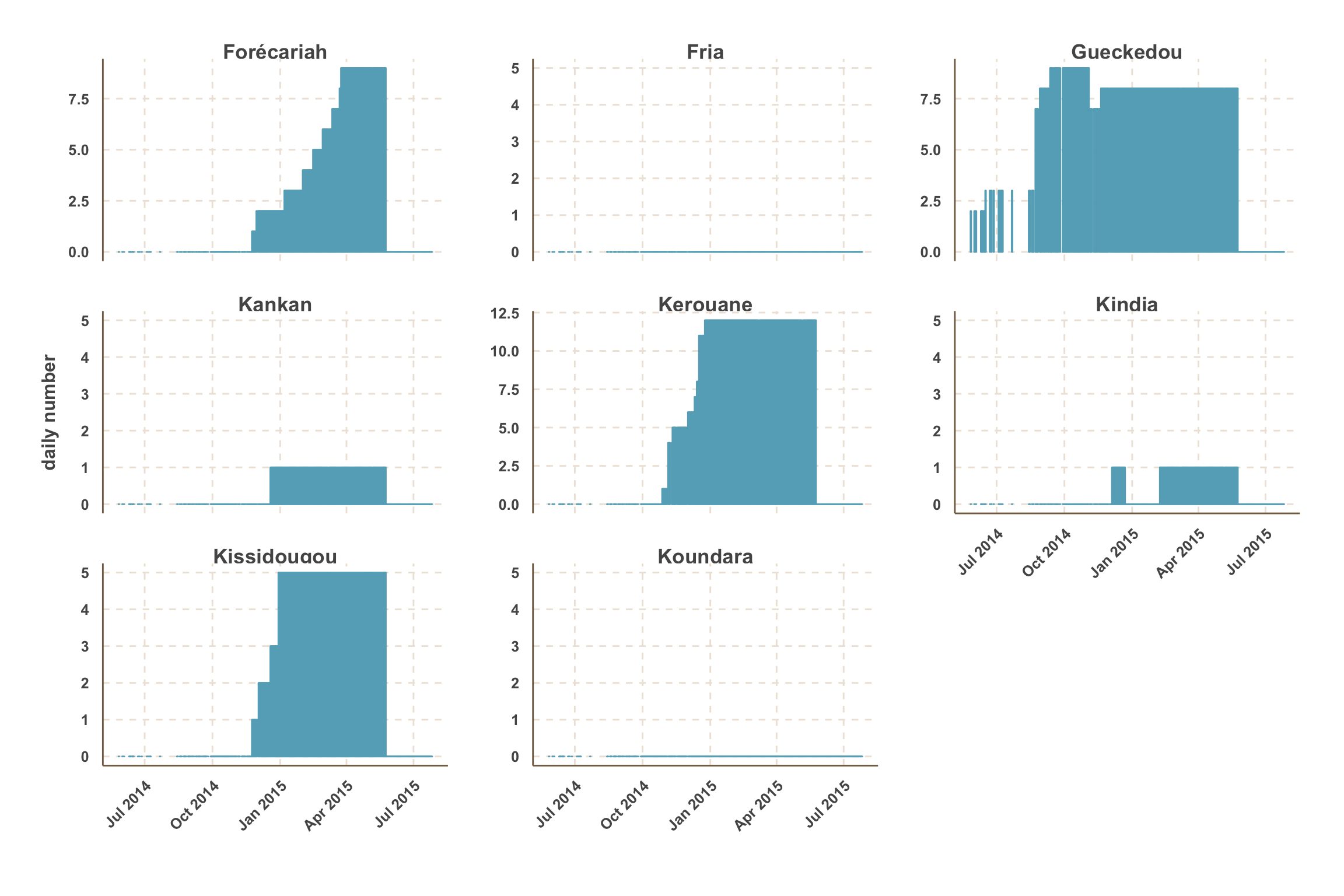
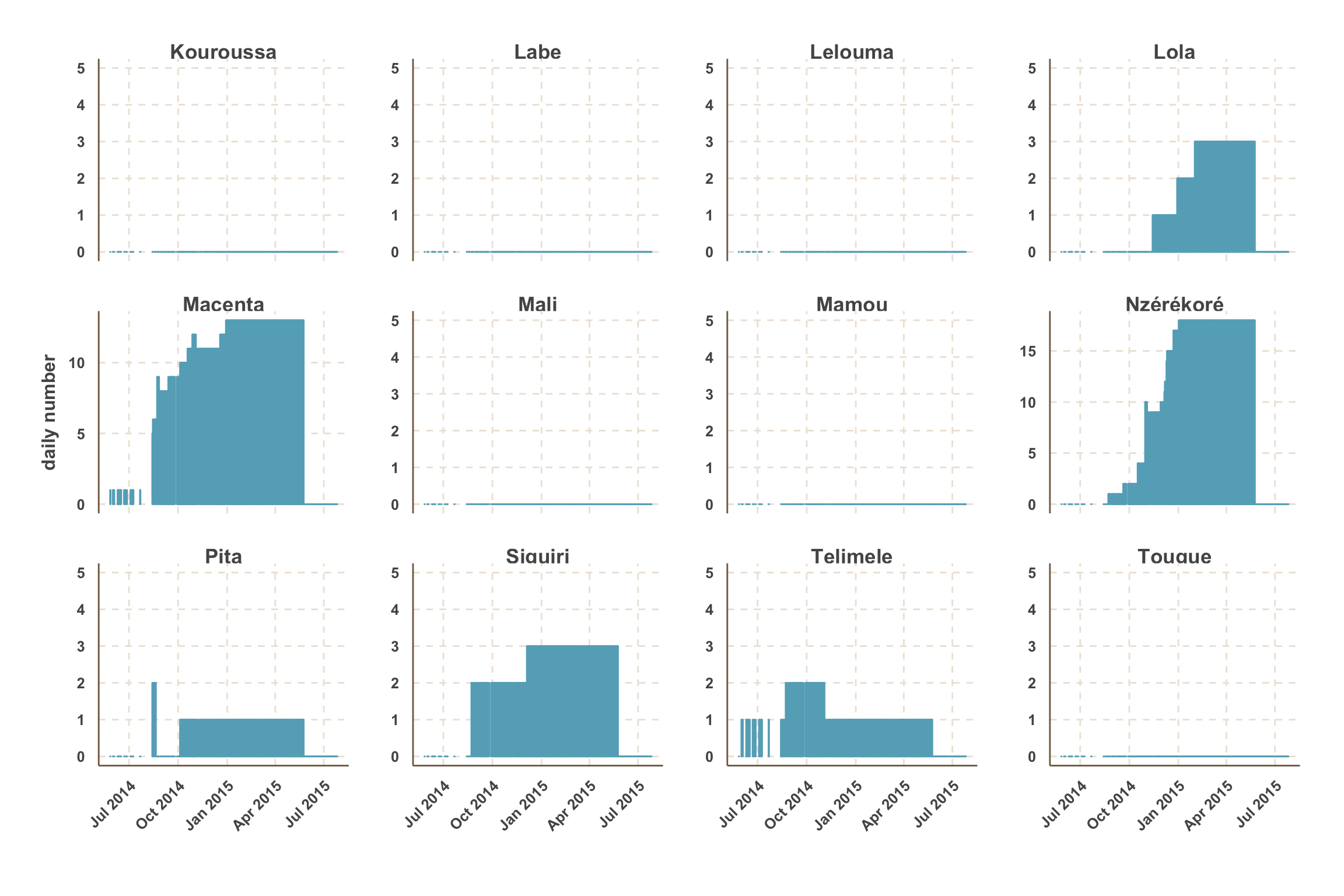
Cumulative deaths among Health-Care Workers
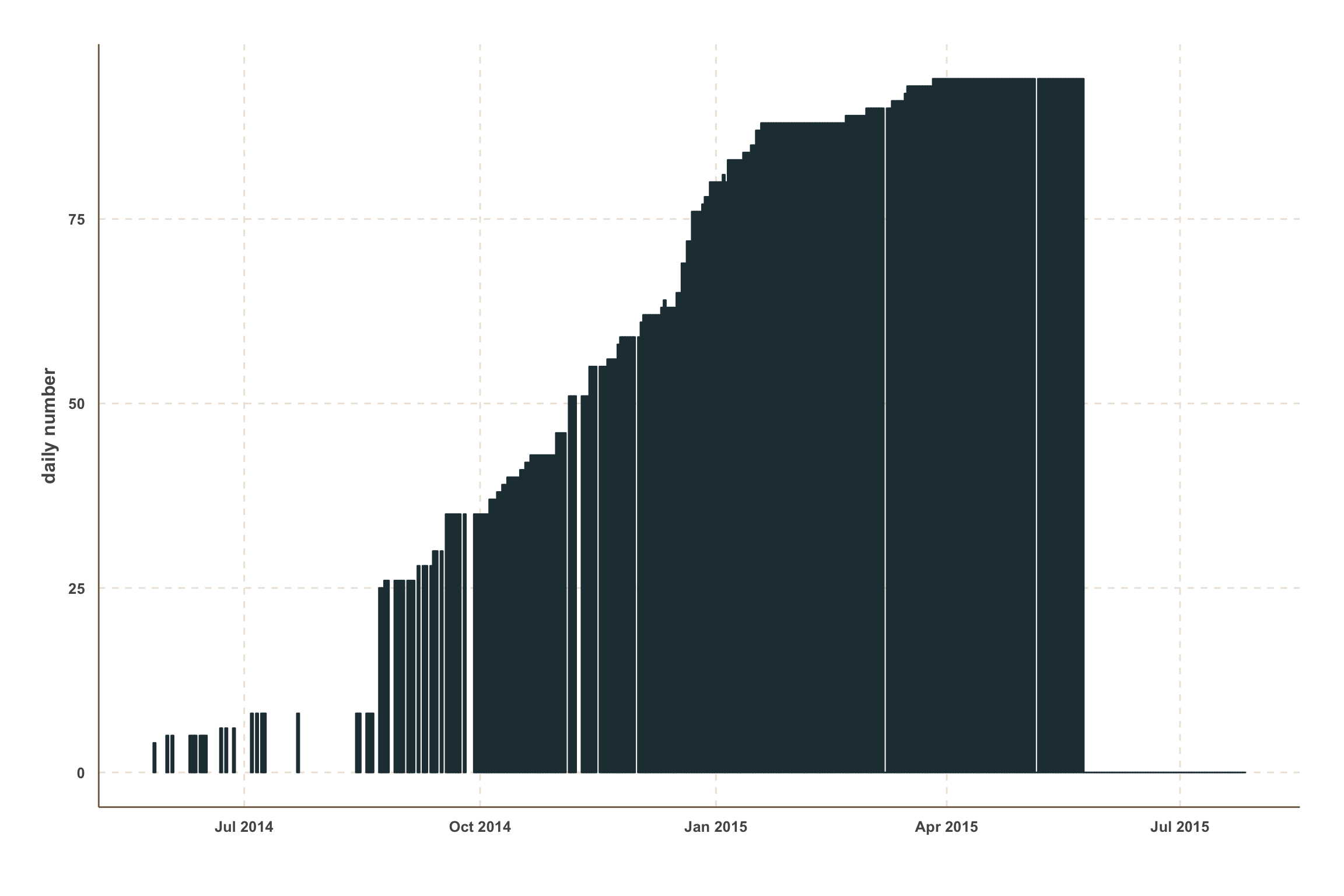
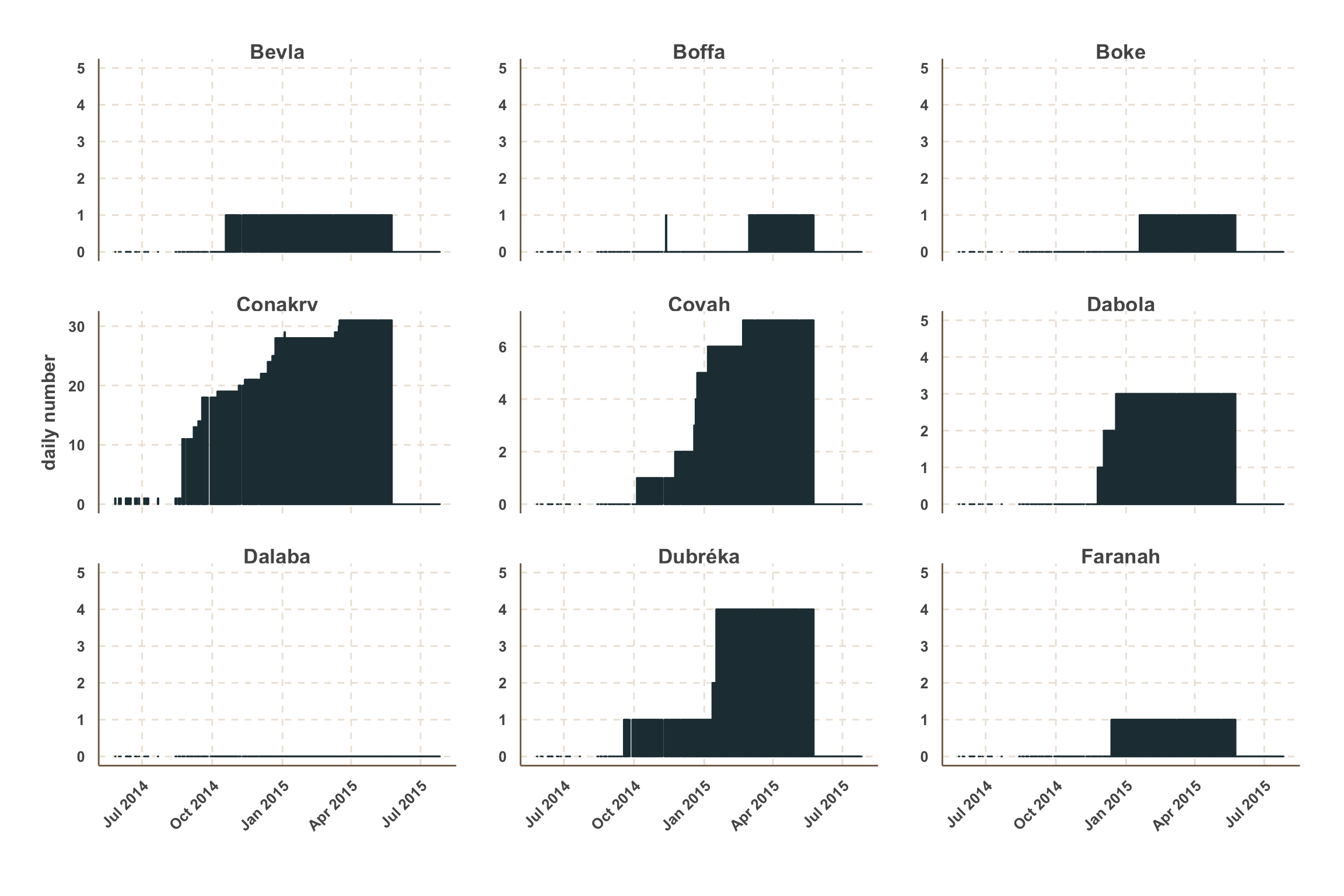
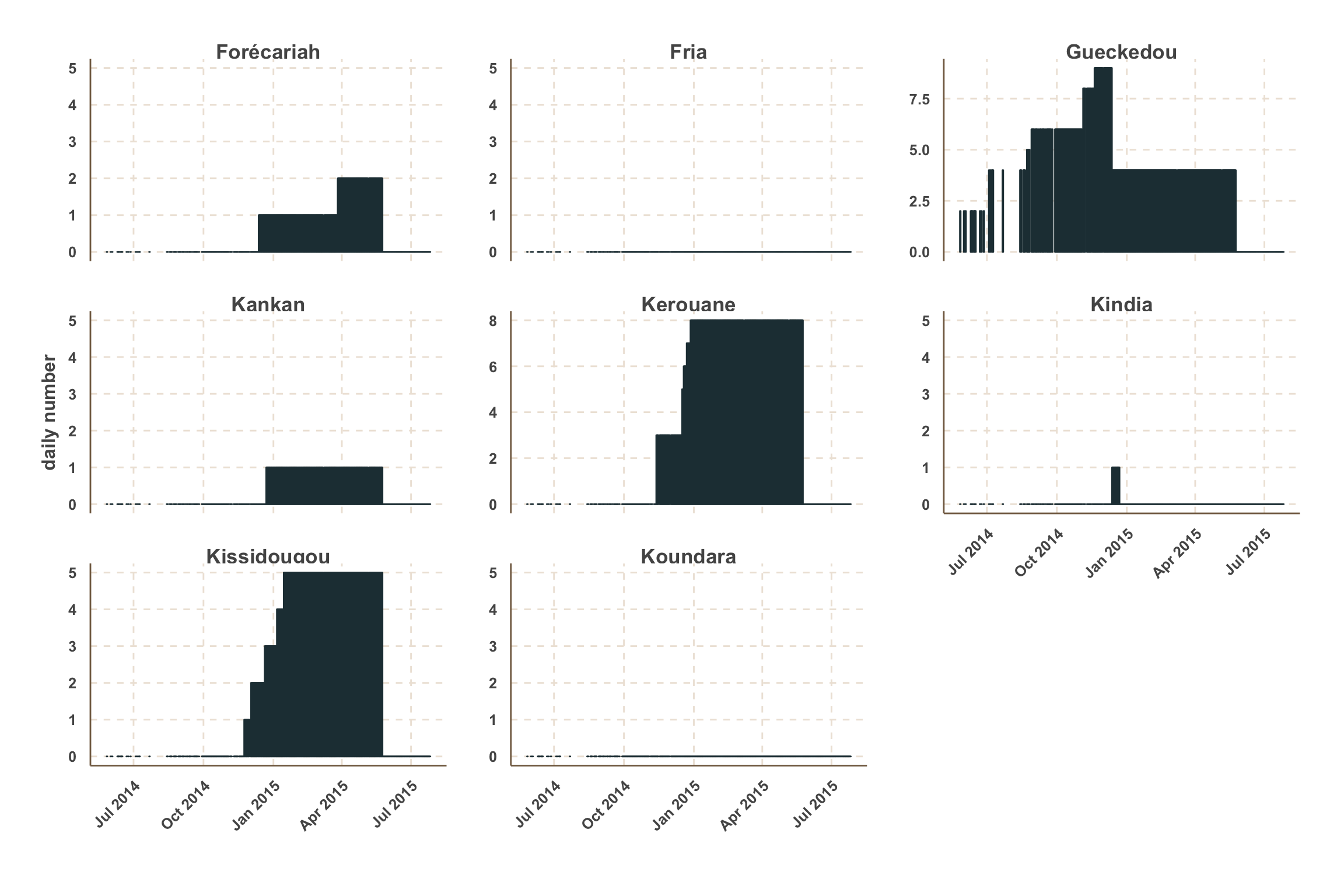
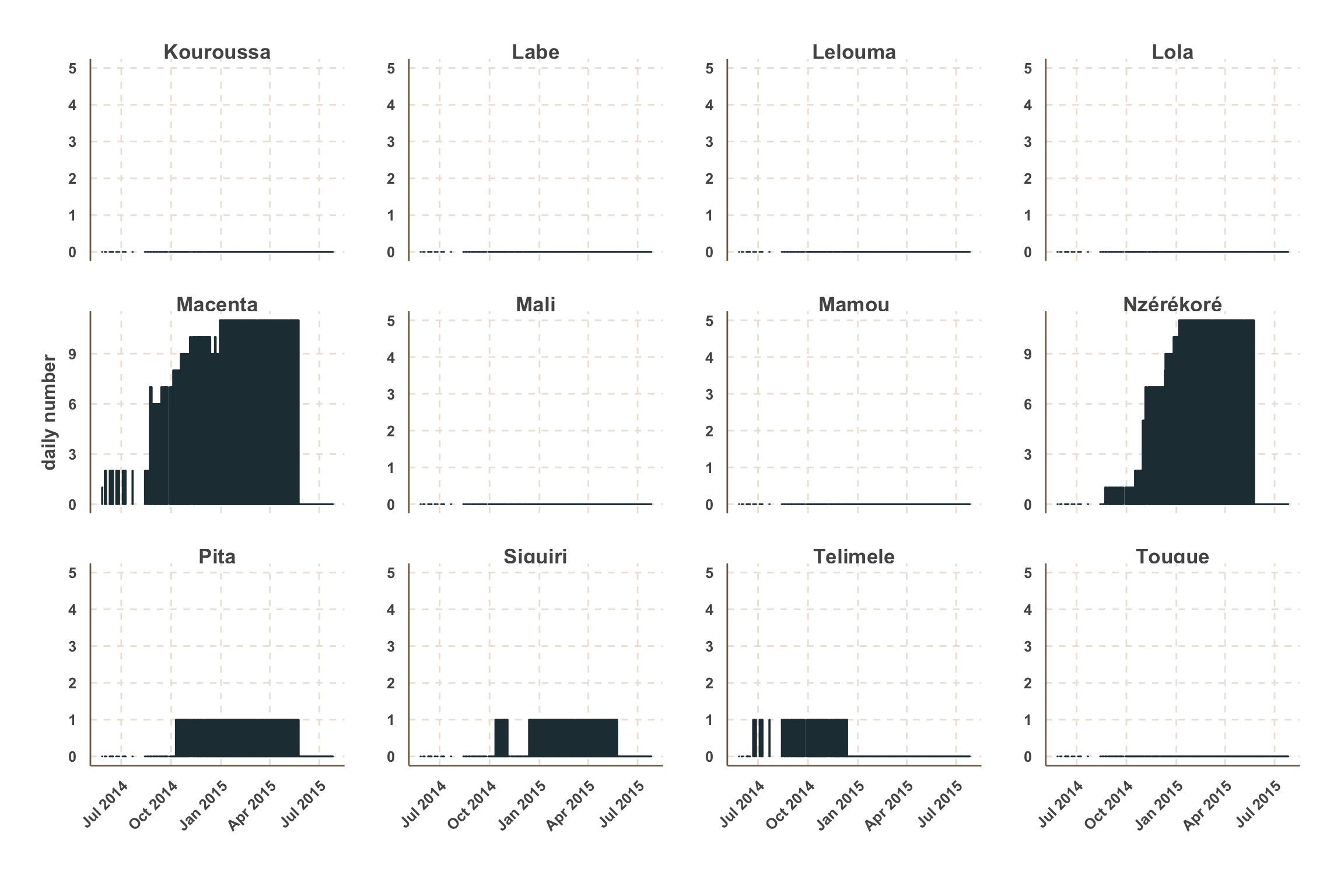
Isolation and treatment centres
Daily numbers of isolated, new admissions & new cases
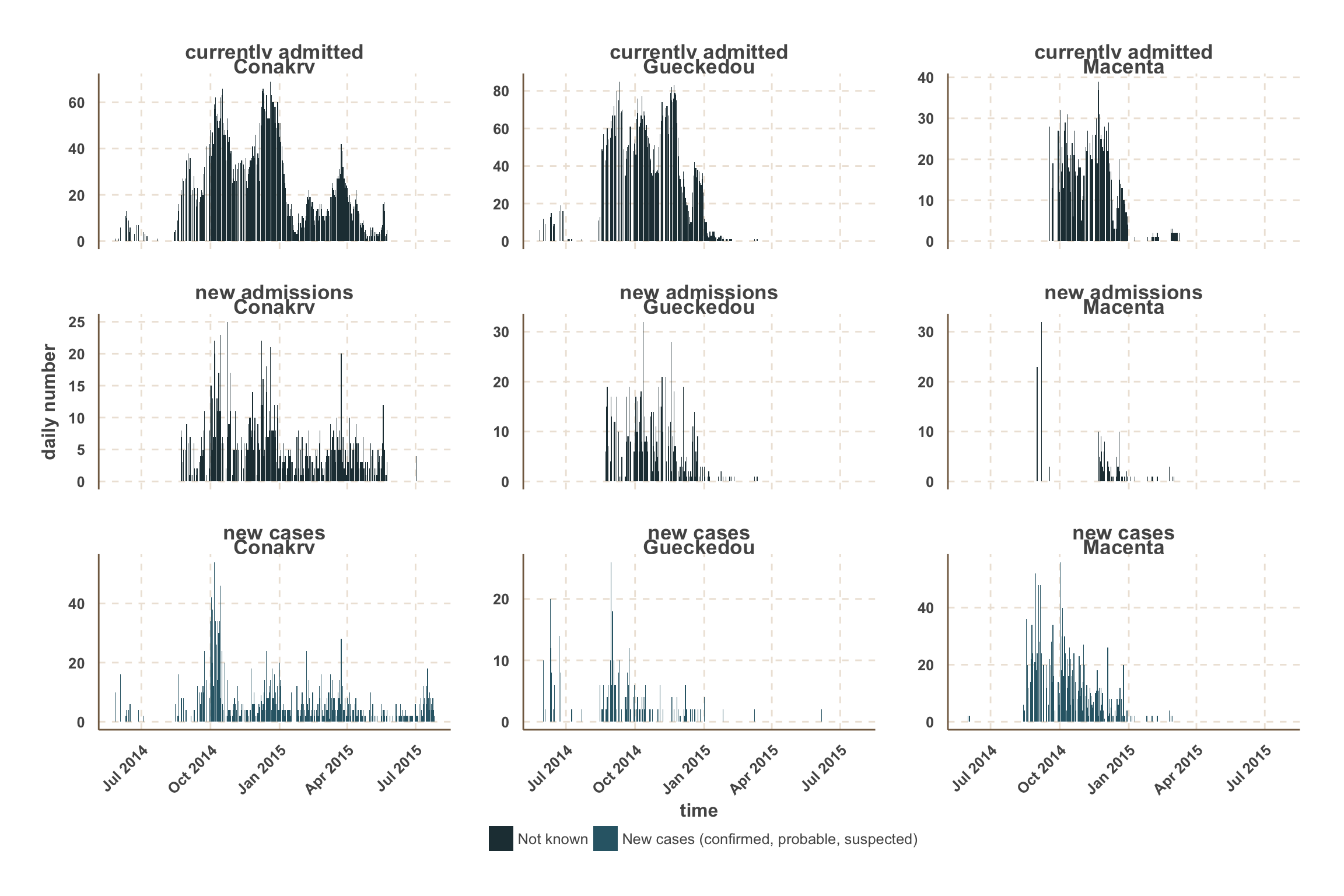
Acknowledgement
Research team
- Sebastian Funk (Lecturer at LSHTM) performed data cleaning, extraction and analysis.
- Anton Camacho (Research Fellow at LSHTM) performed data cleaning, extraction and analysis.
- Beth Smout and Rebecca Glover (Research Assistents at LSHTM) performed data cleaning and extraction.
- We are grateful to Dr Boubacar Diallo (WHO Guinea) and Prof. René Migliani (Conseiller du coordinateur national de la lutte contre Ebola en Guinée) for providing the Guinean SitReps.
Funding
- This project (#13165) is funded by the Research for Health in Humanitarian Crises (R2HC) Programme, managed by Research for Humanitarian Assistance (ELRHA).
- The R2HC programme aims to improve health outcomes by strengthening the evidence base for public health interventions in humanitarian crises. Visit www.elrha.org/work/r2hc for more information.
- The £8 million R2HC programme is funded equally by the Wellcome Trust and DFID, with Enhancing Learning and ELRHA overseeing the programme’s execution and management.












